site search
online catalog
CIVIL WAR US MARINE CORPS GROUPING OF PRIVATE JOHN HAMMOND: REGULATION SHAKO, DRESS COAT, TROUSERS, FATIGUE CAP, AND KNAPSACK: THE SET IN THE BOOKS!
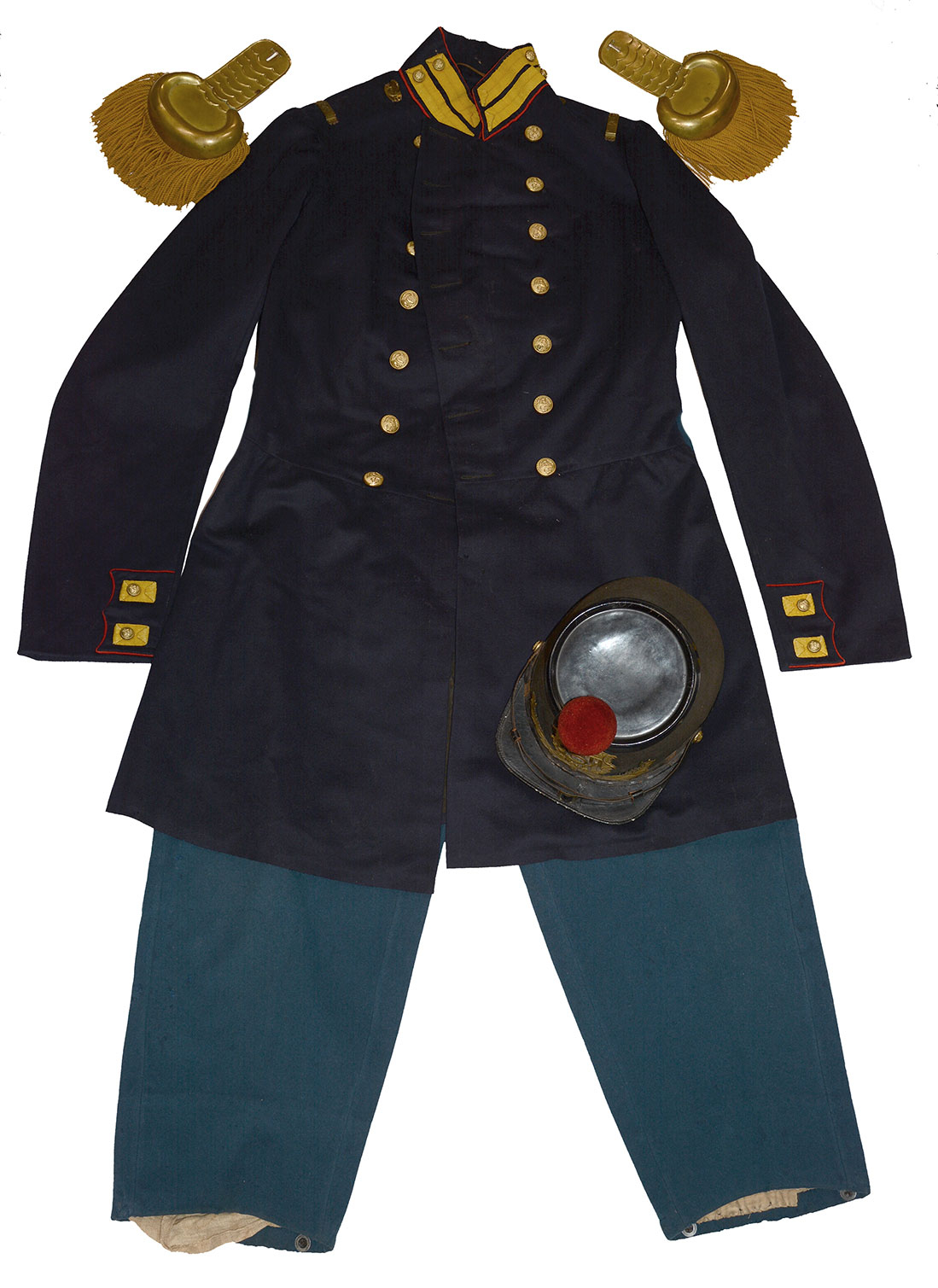
Hover to zoom

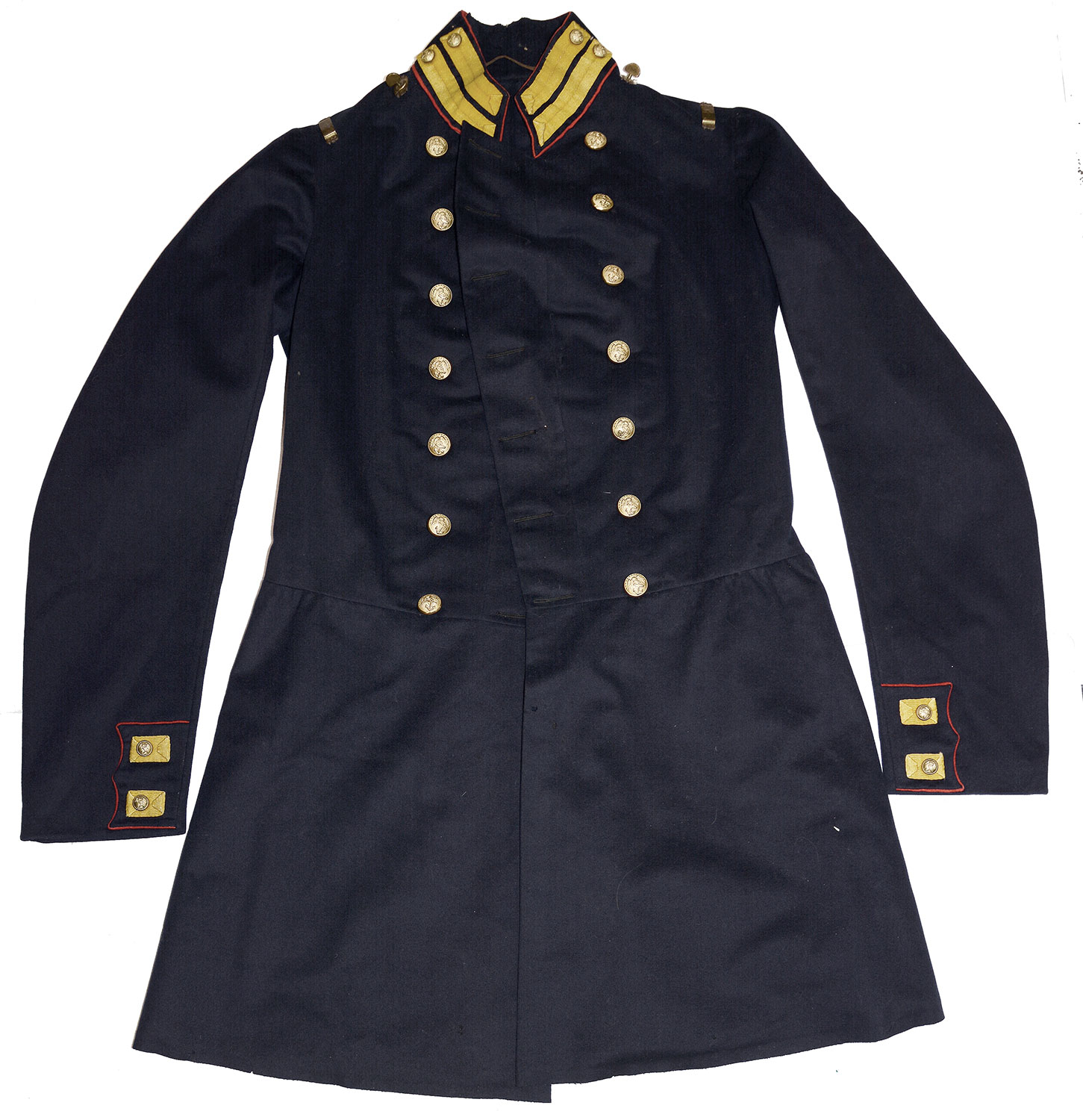
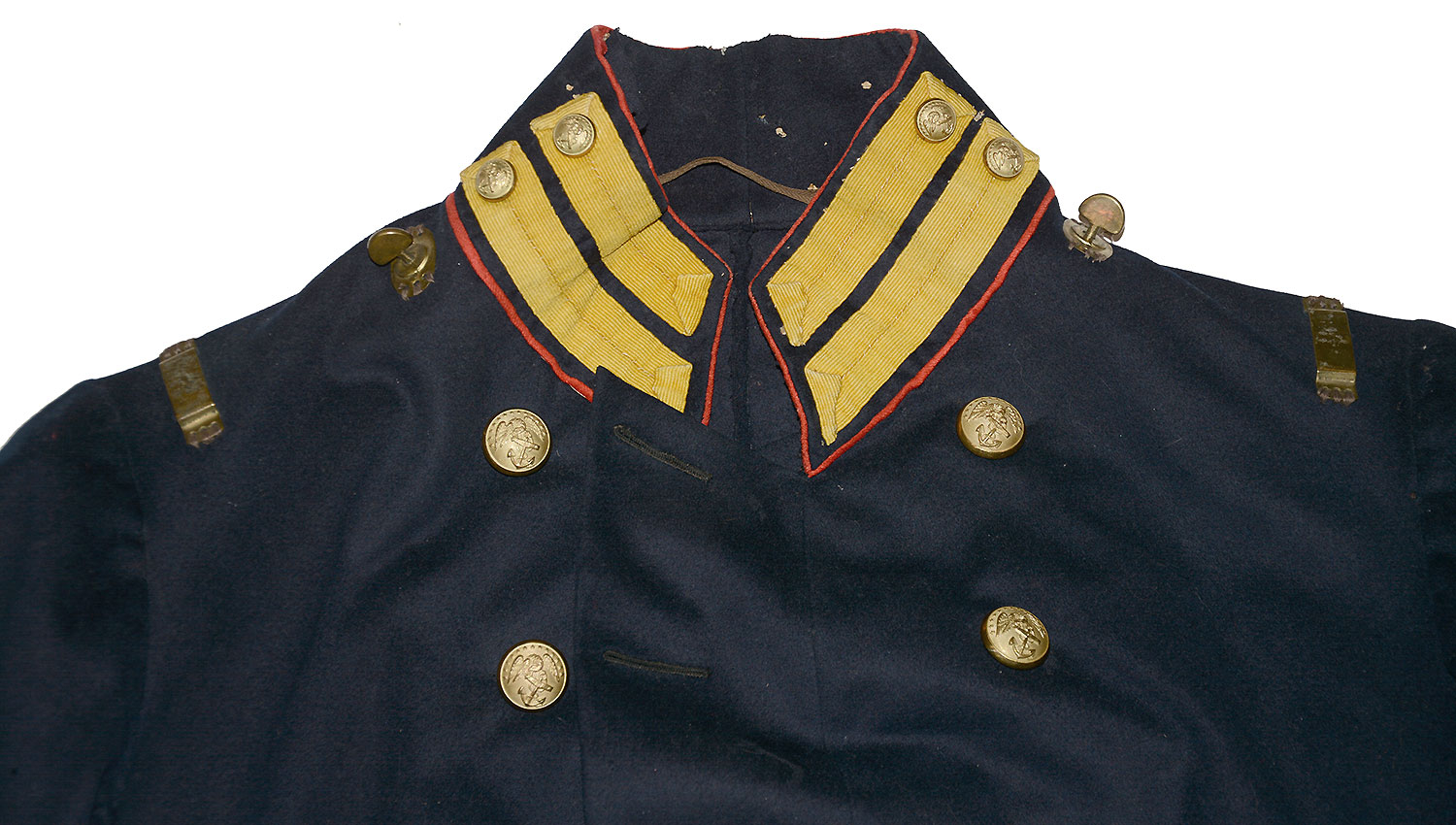
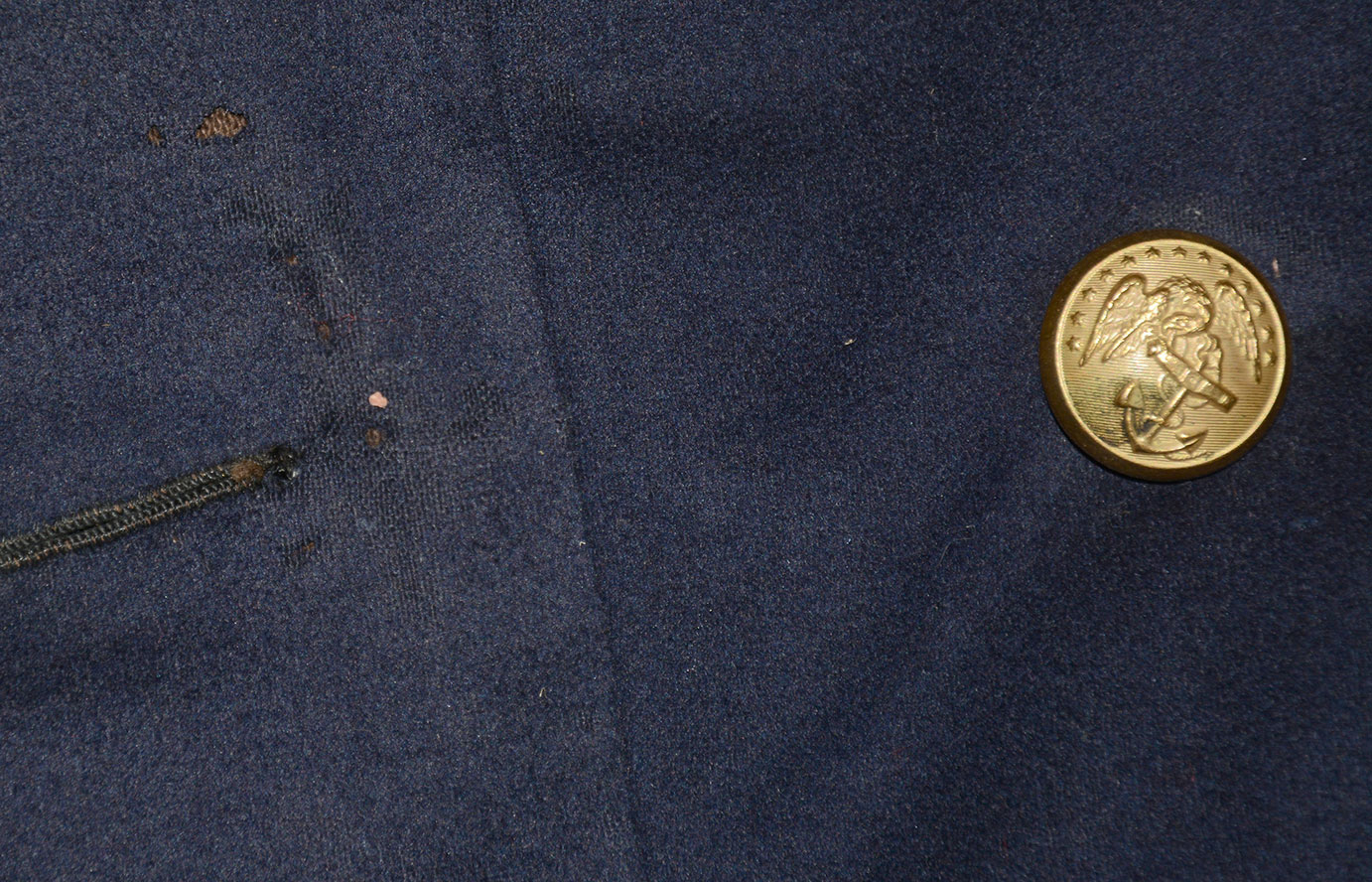
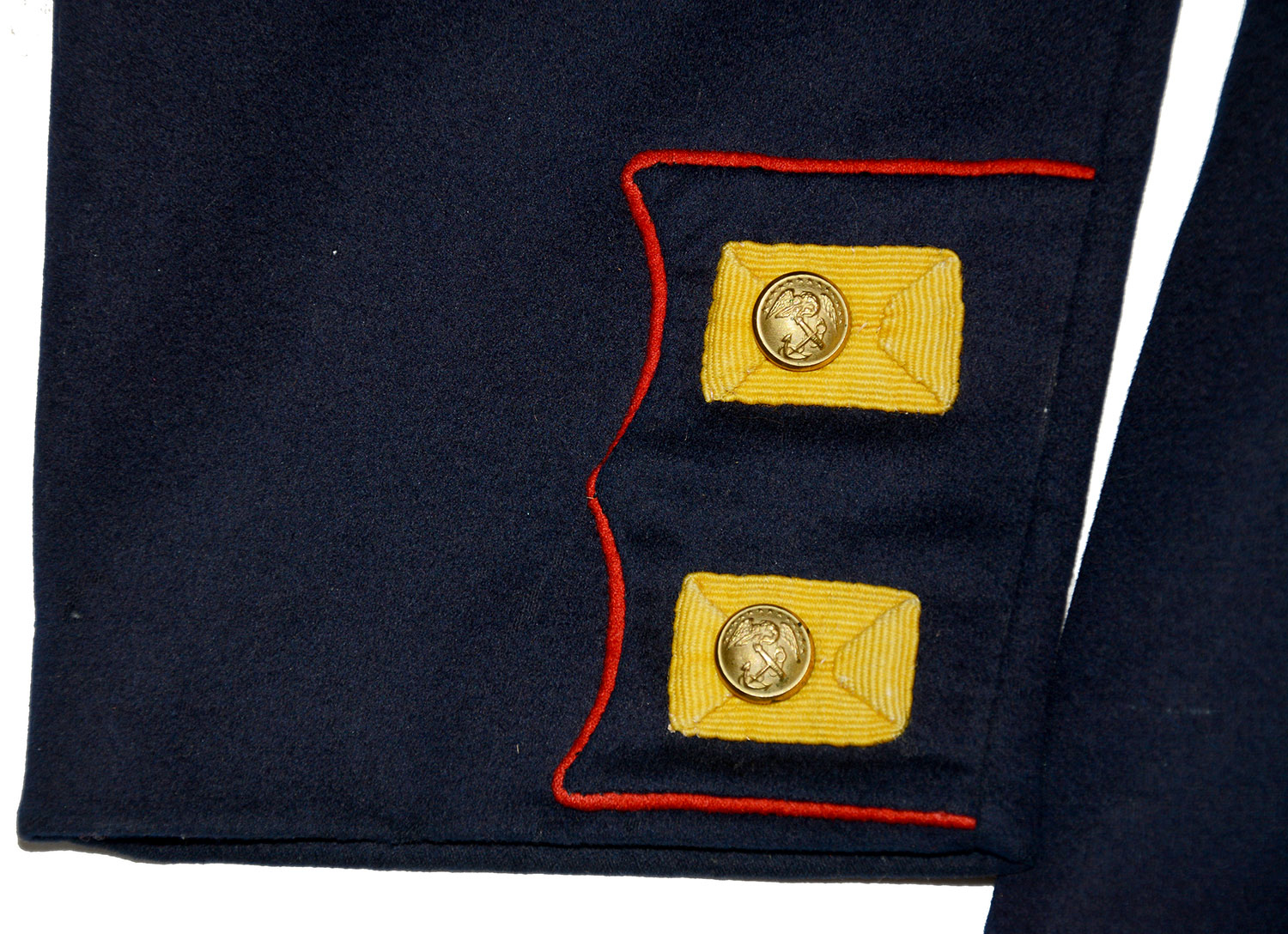
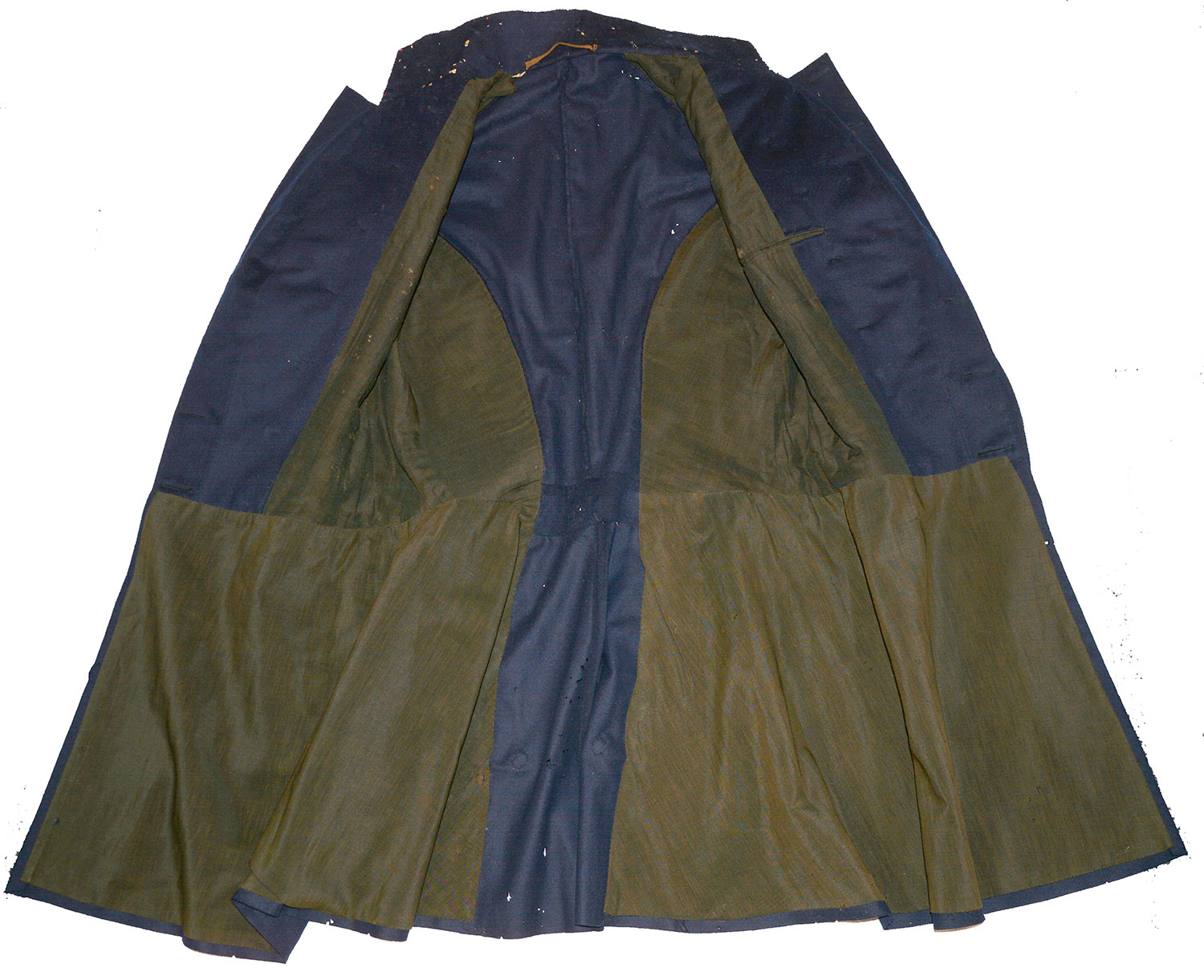
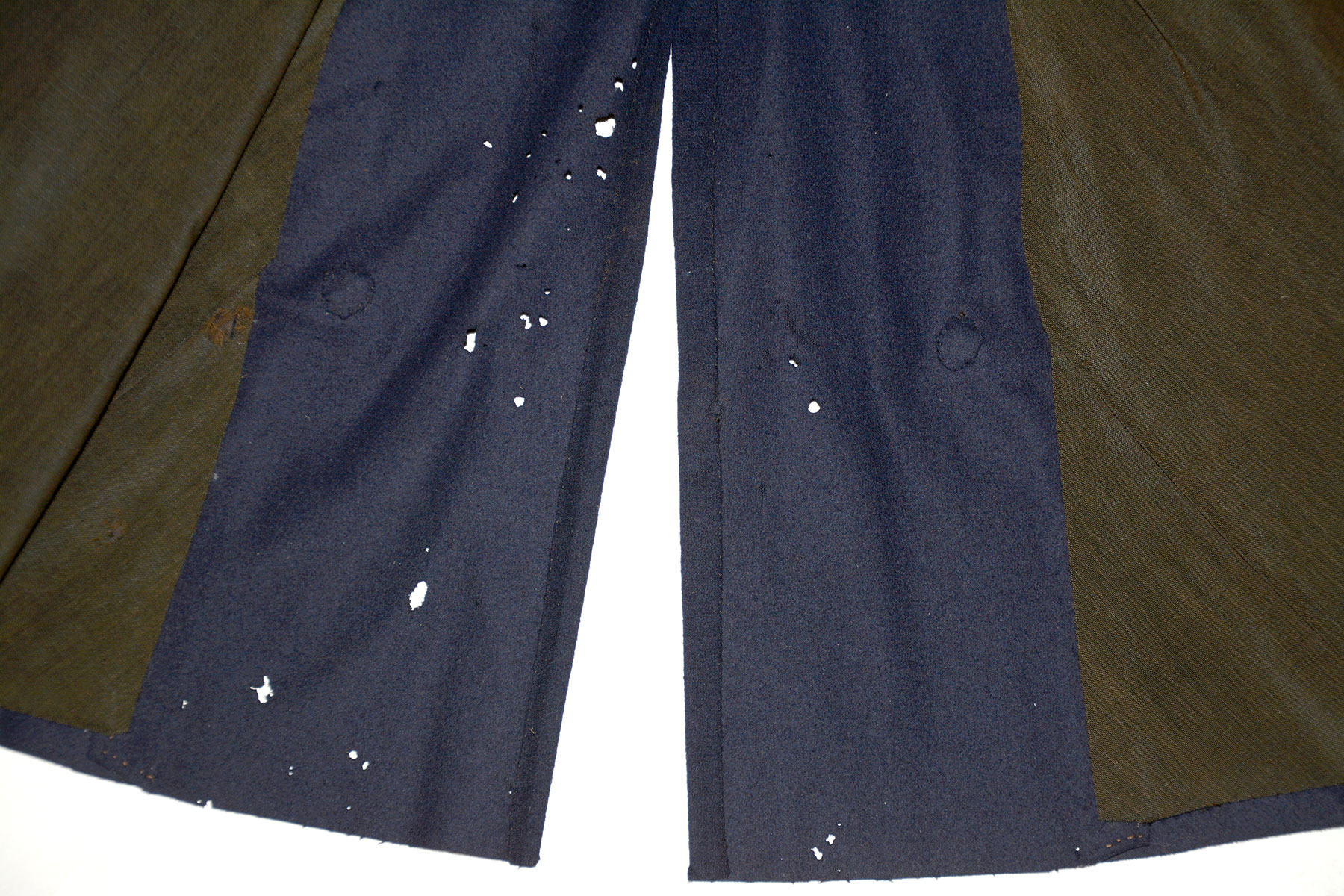
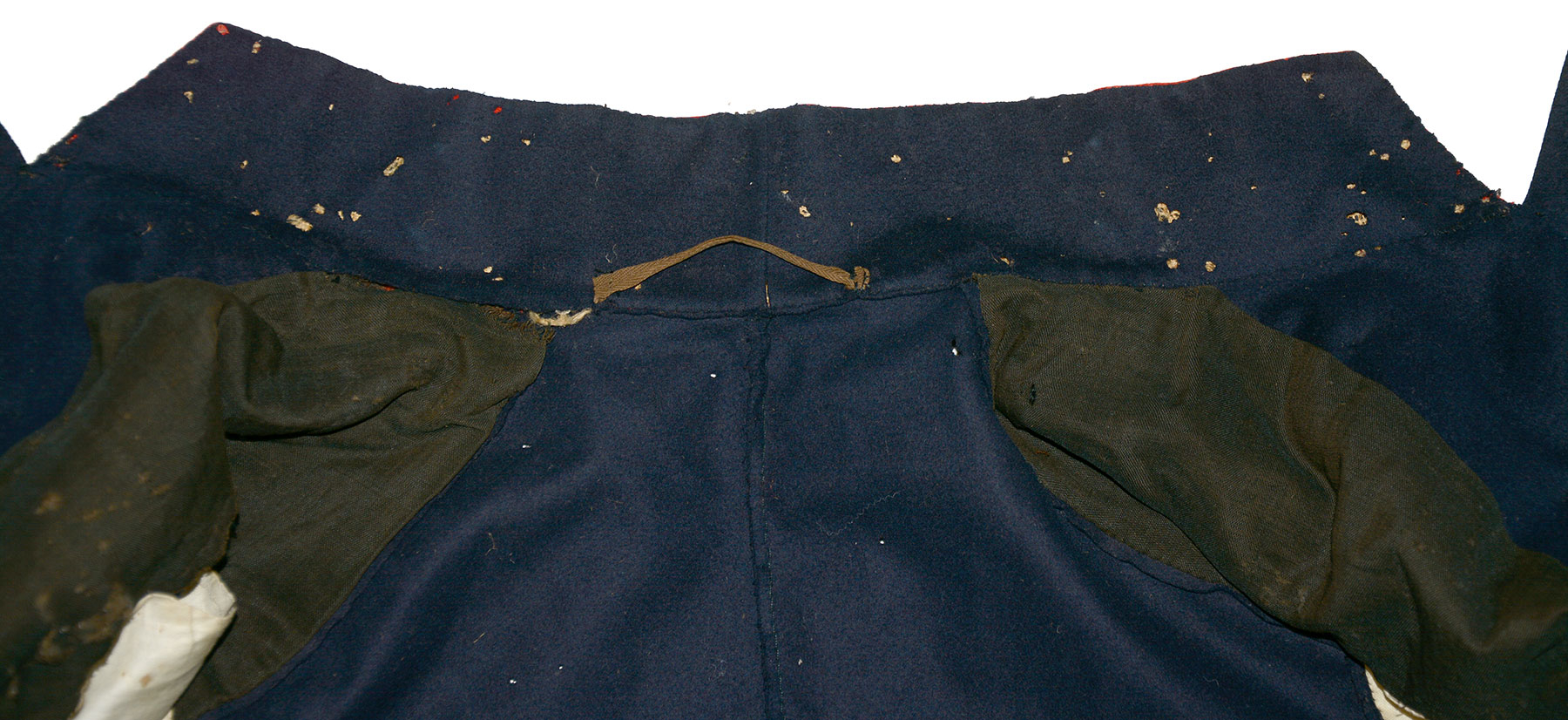
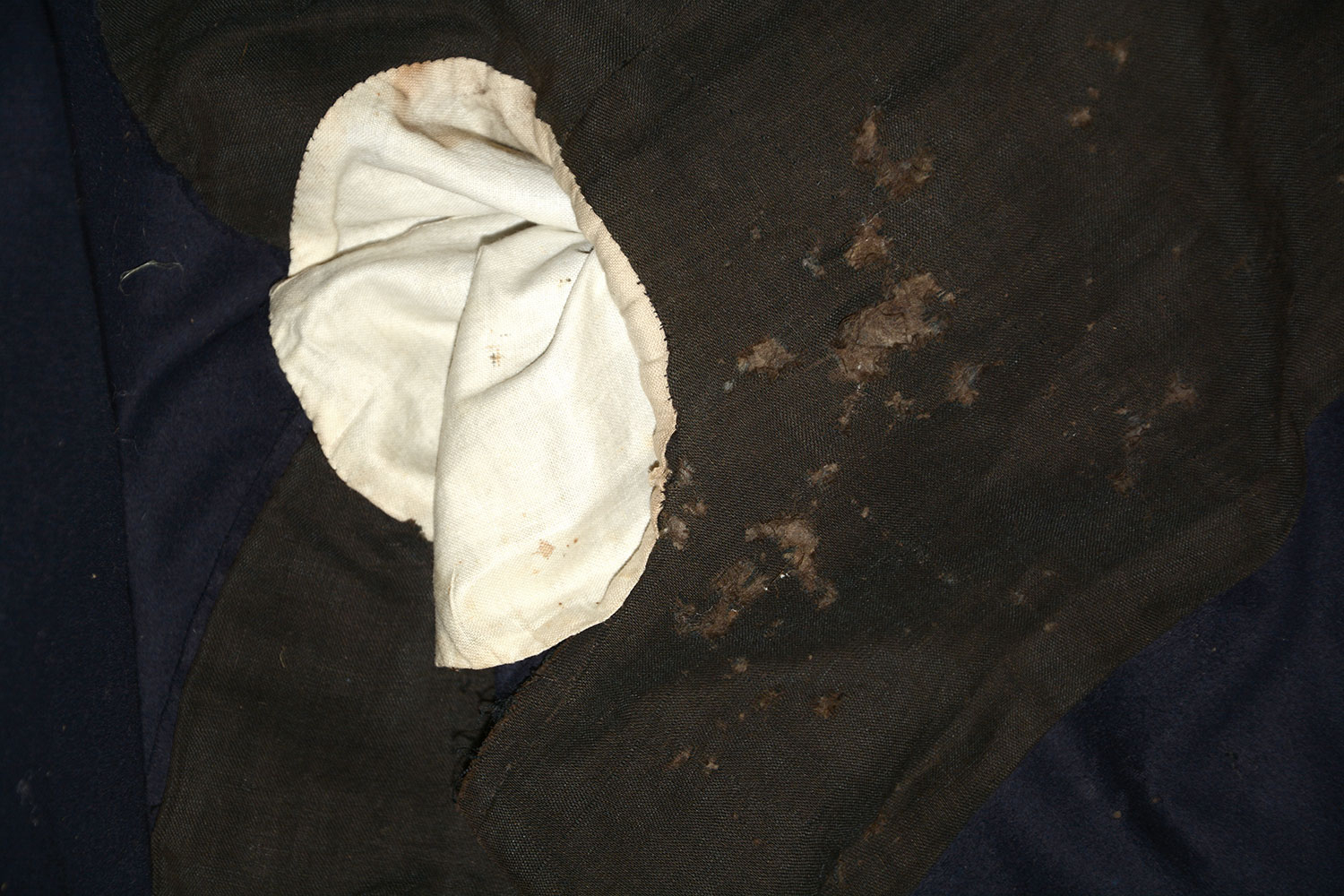
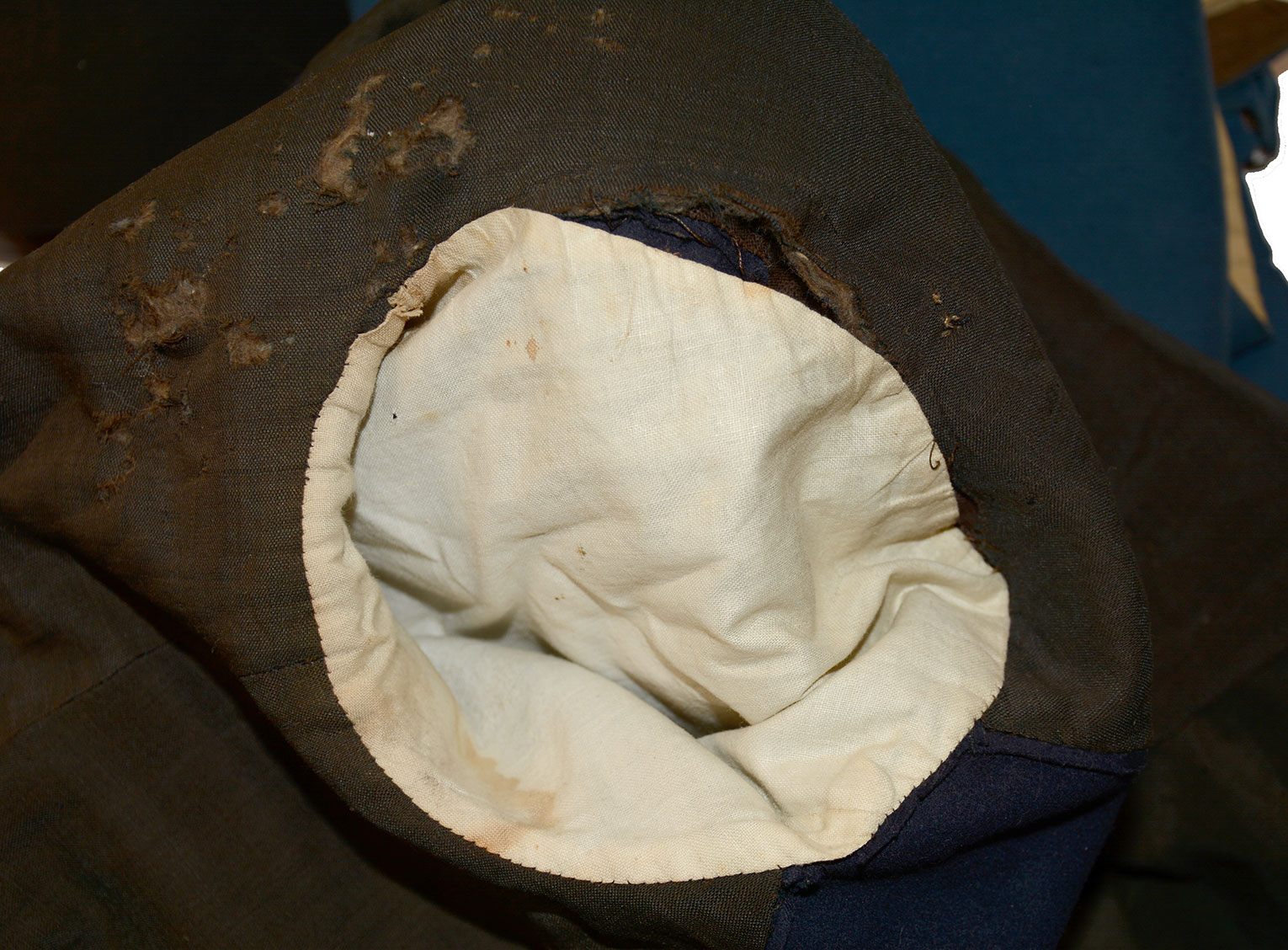
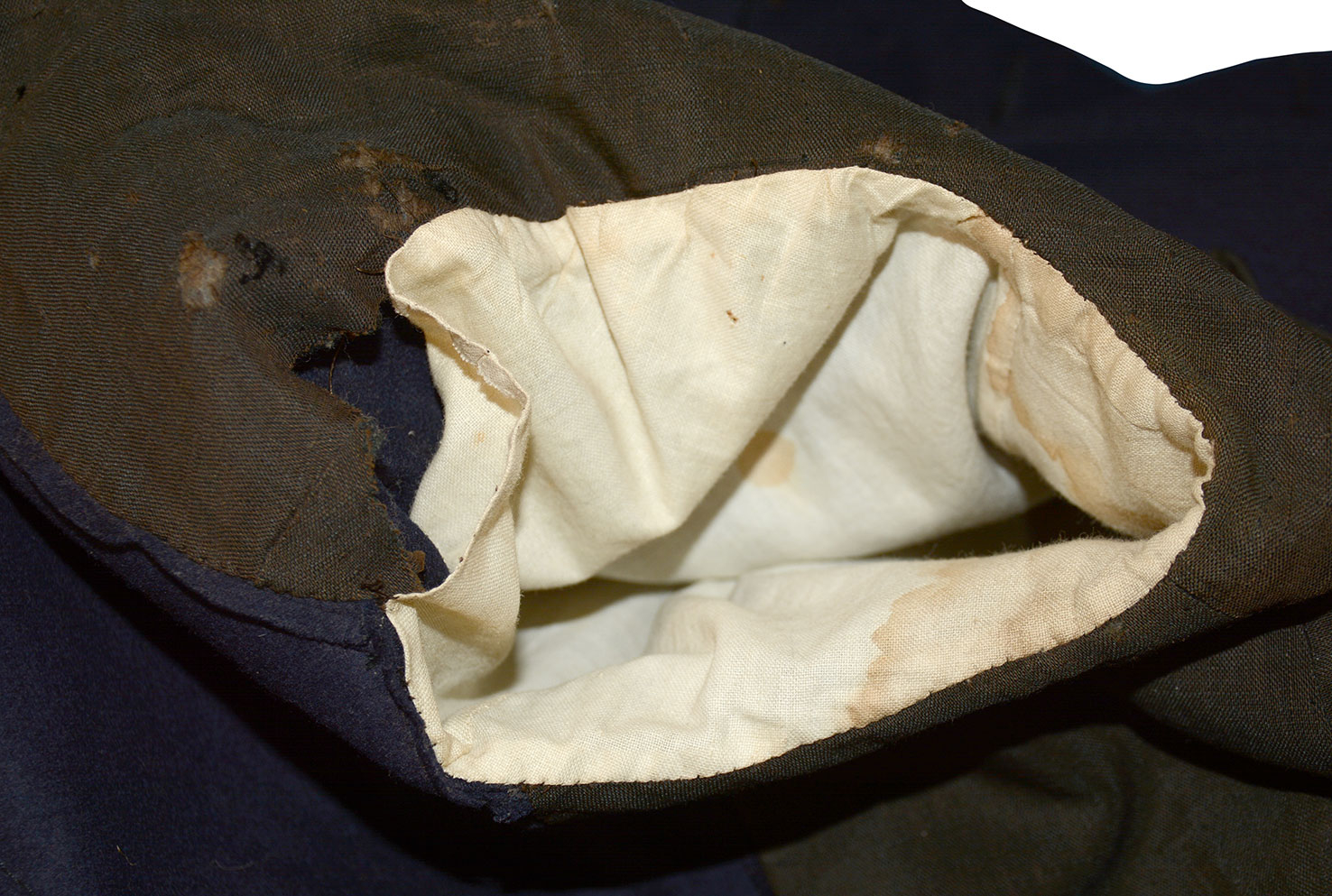
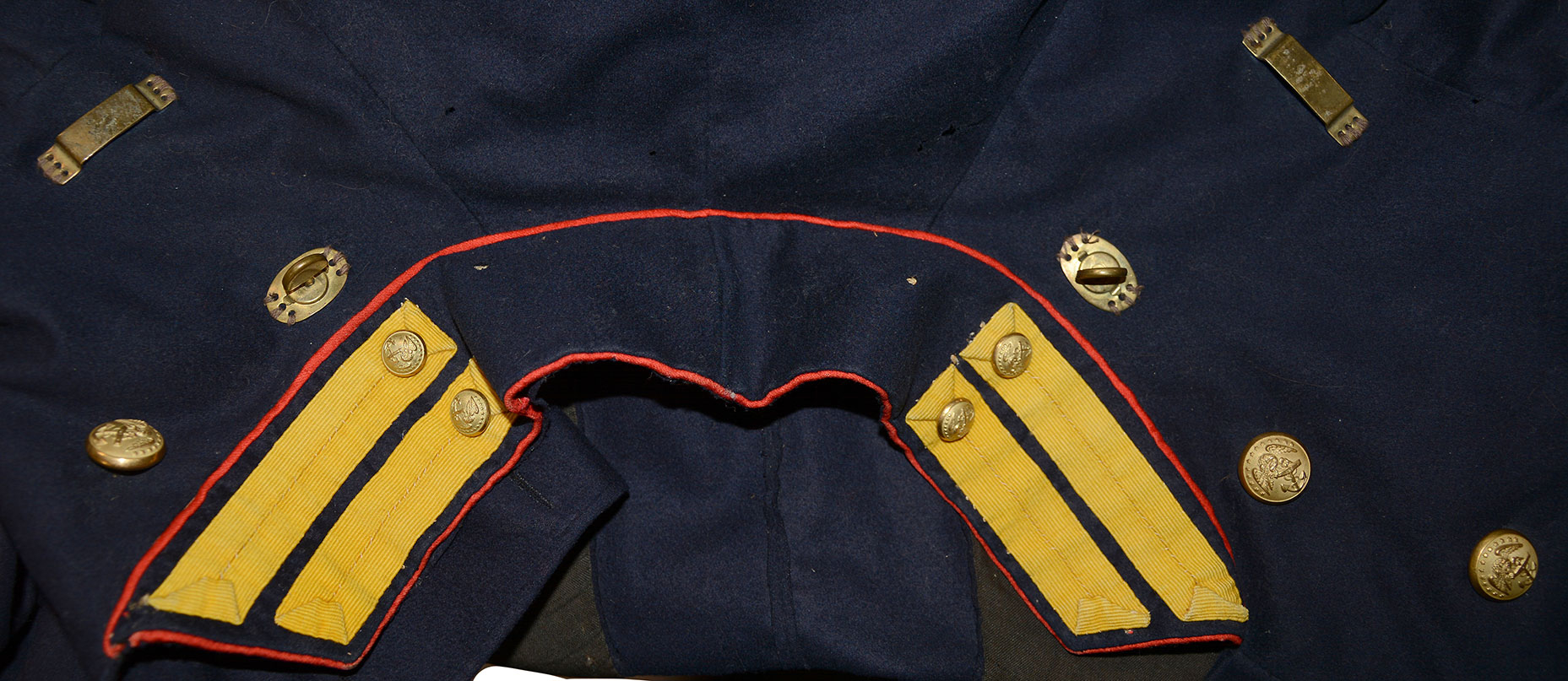
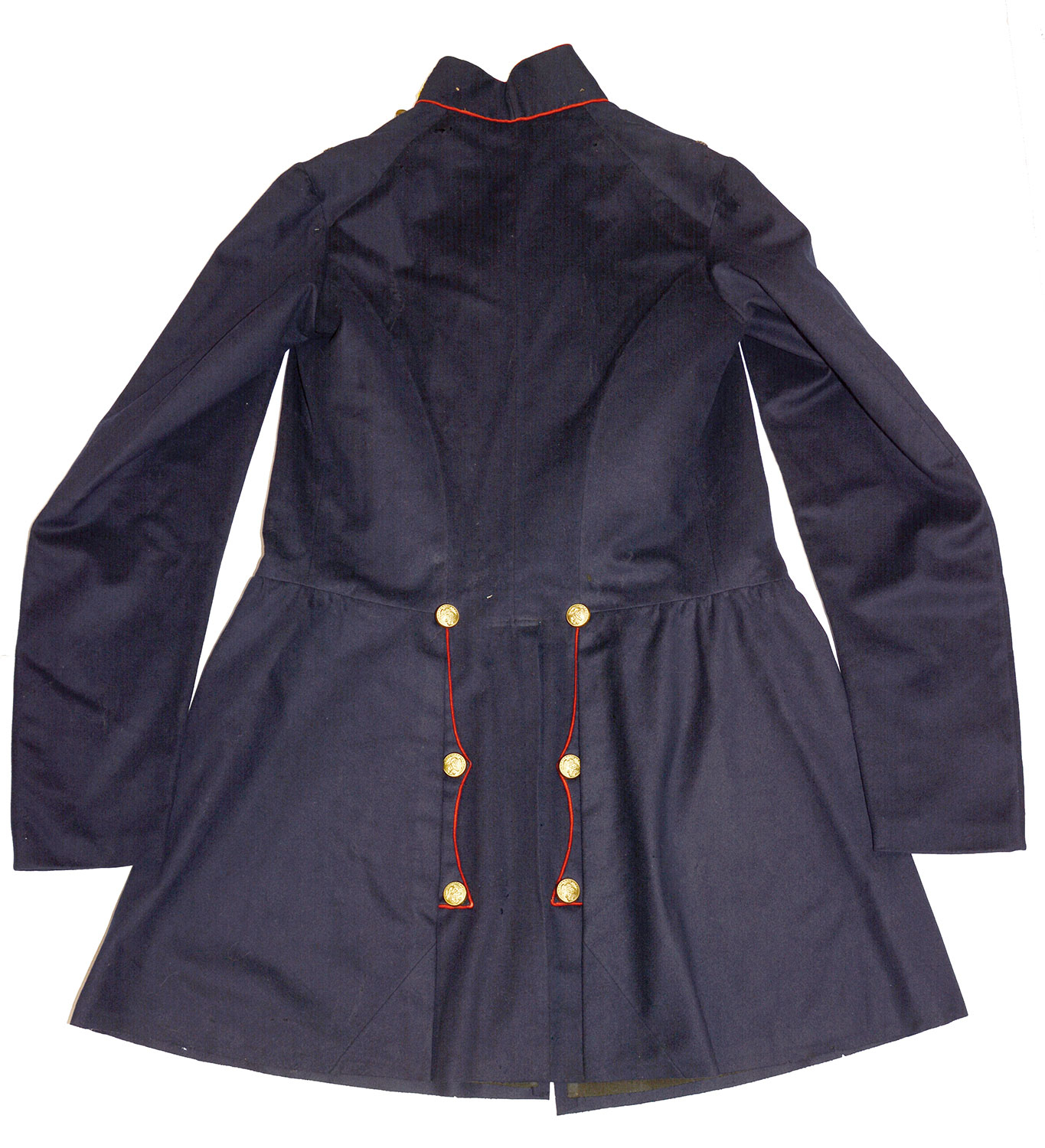
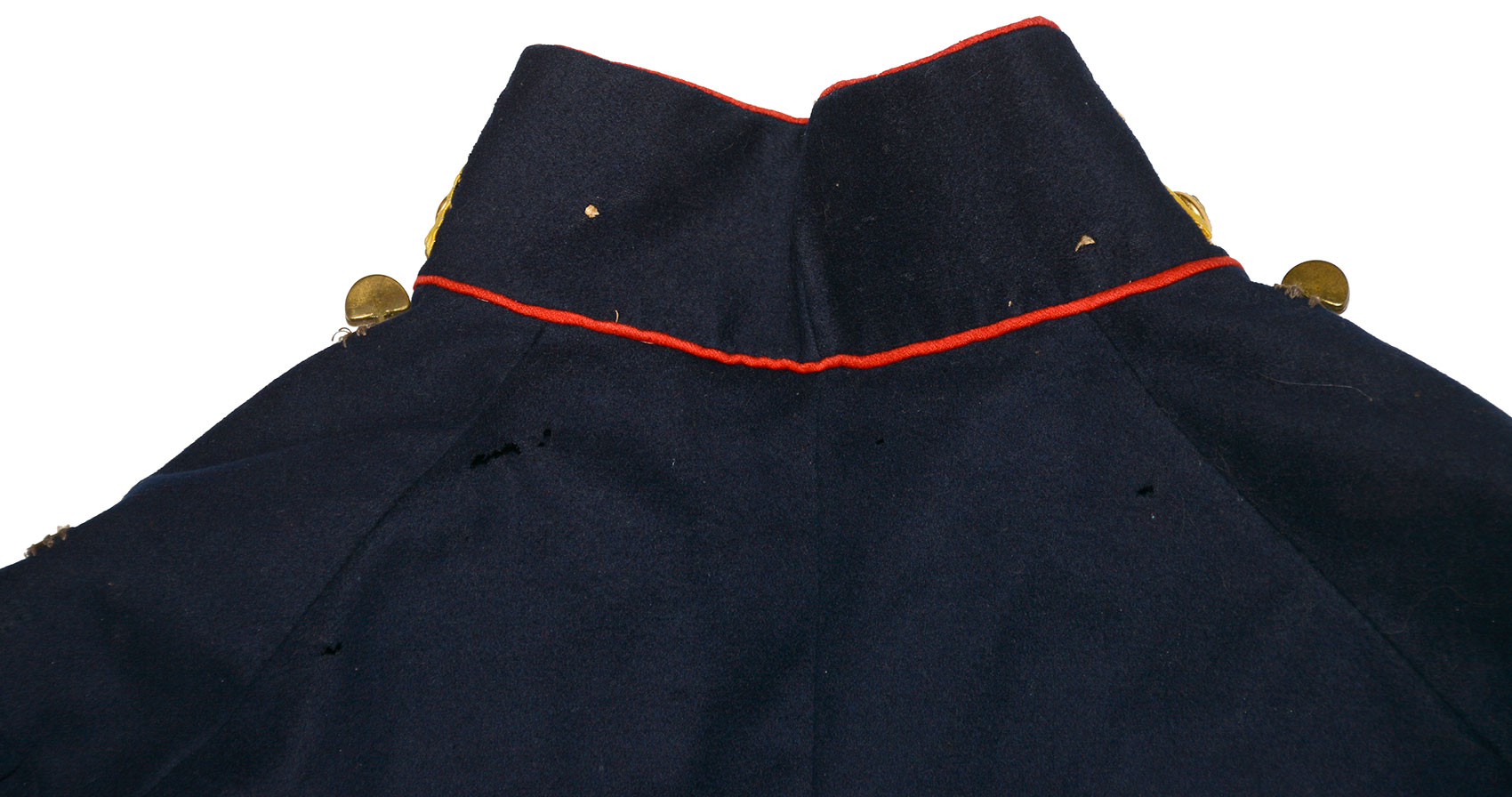
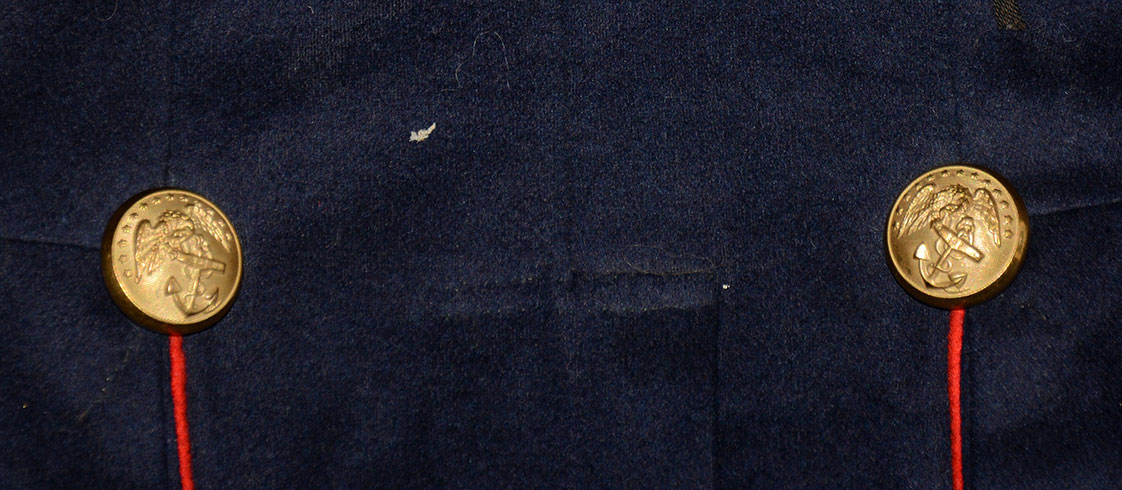
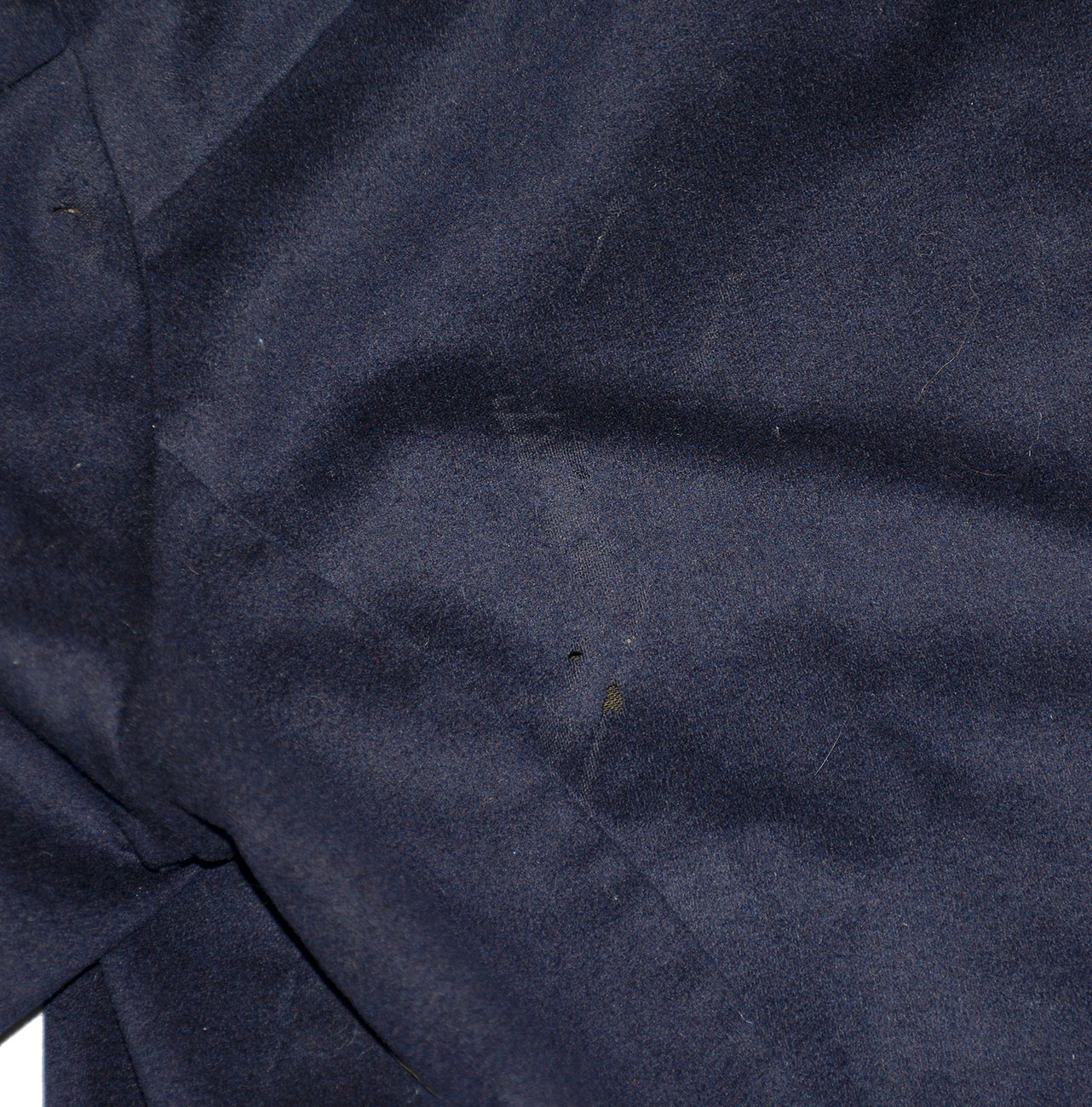
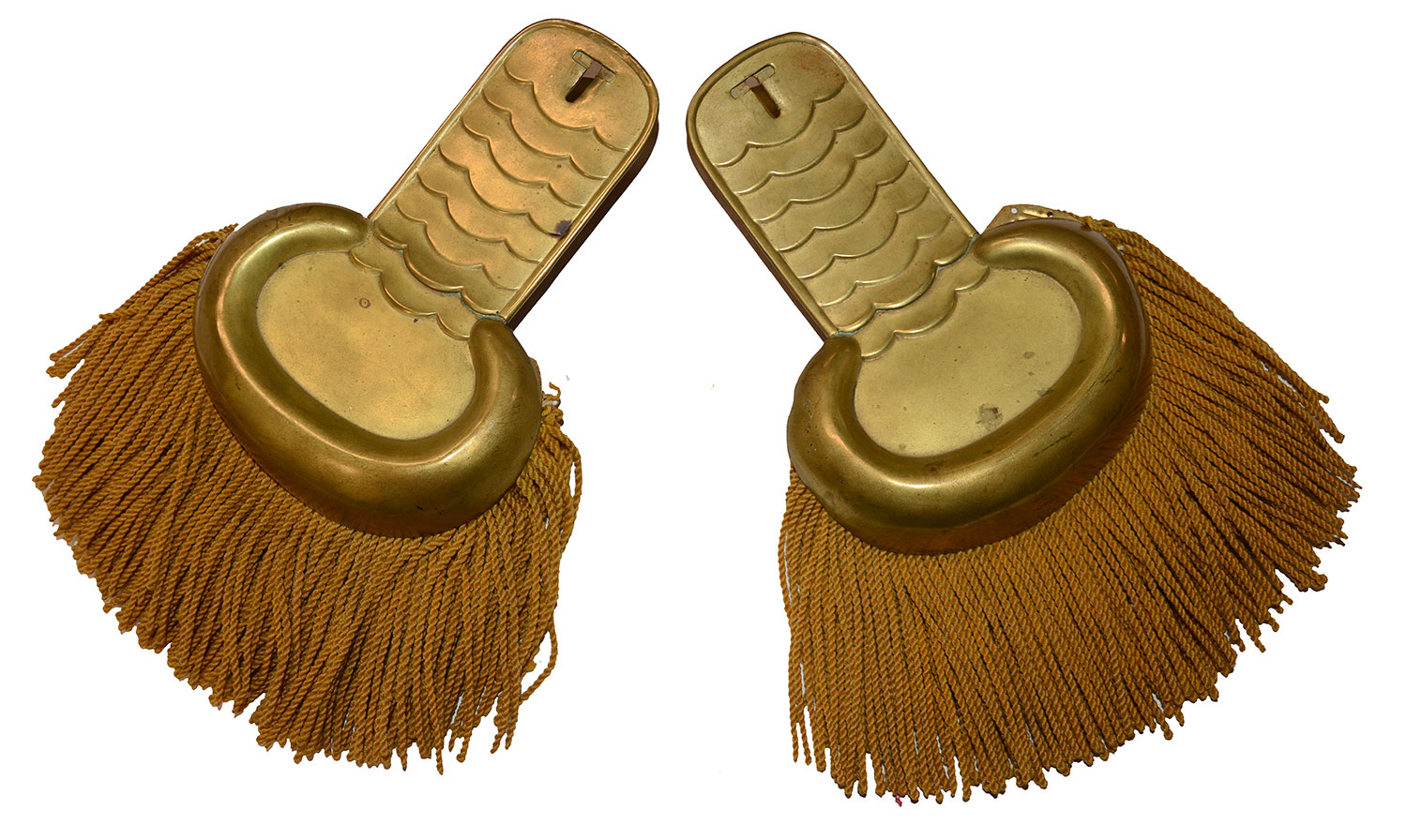
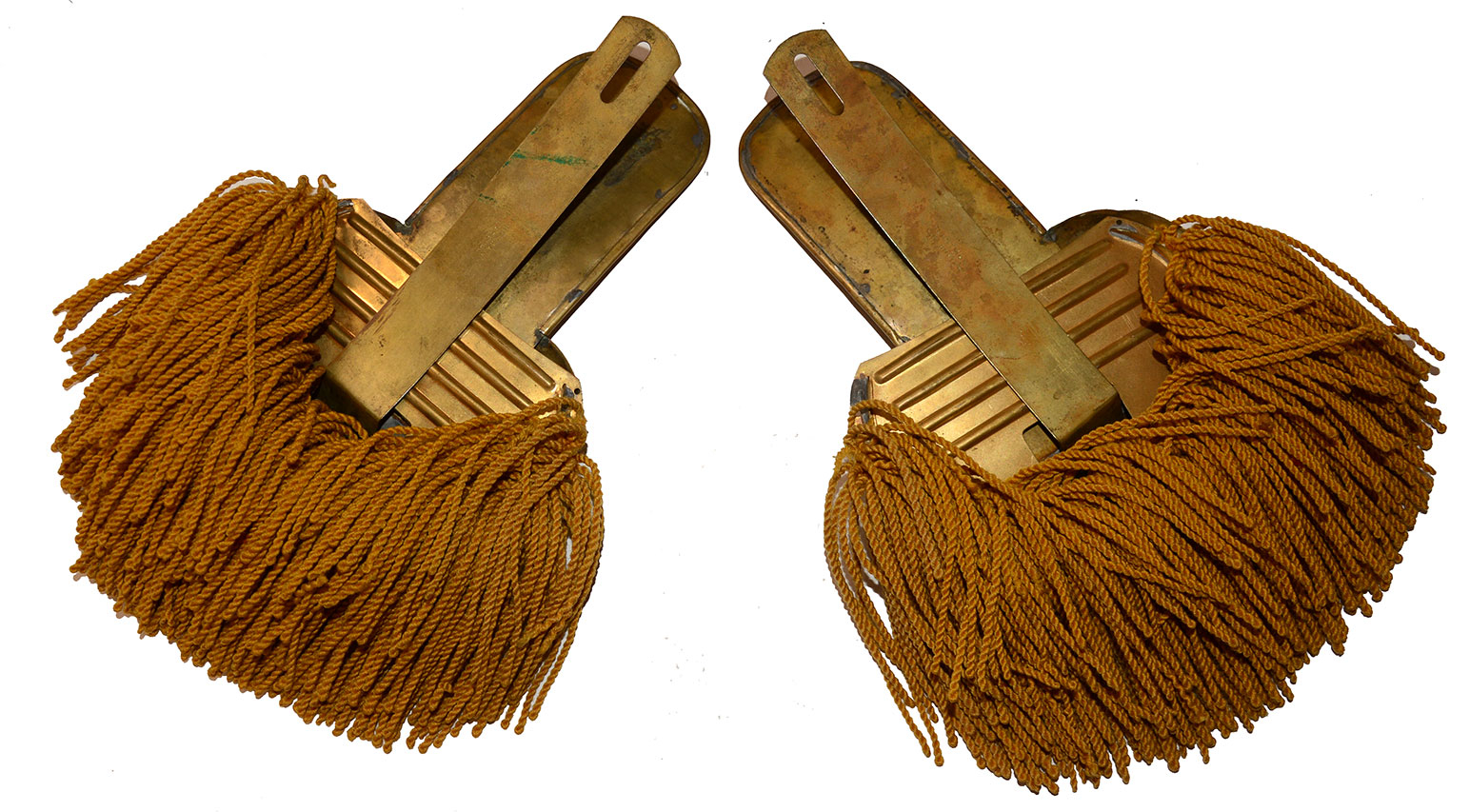
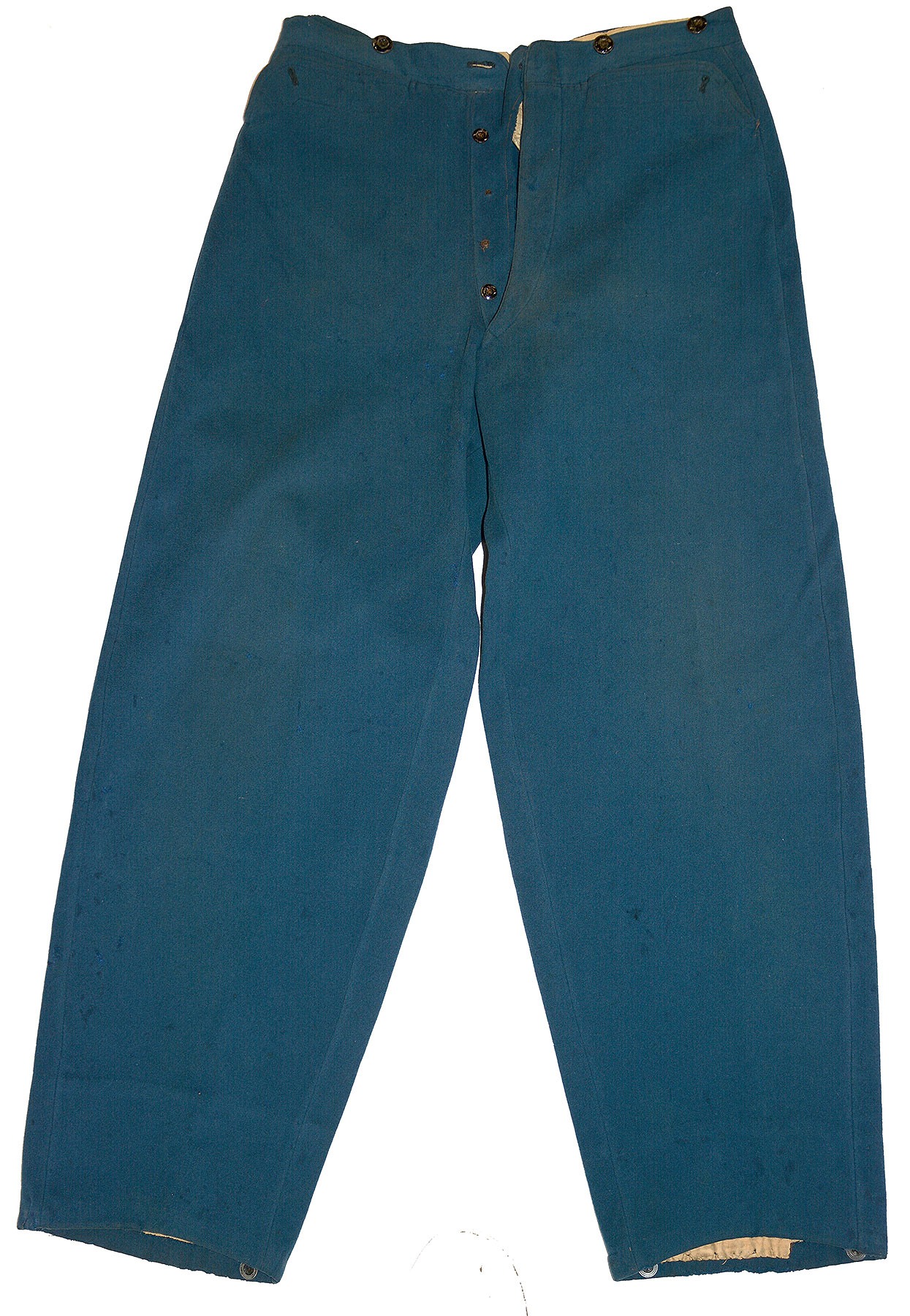
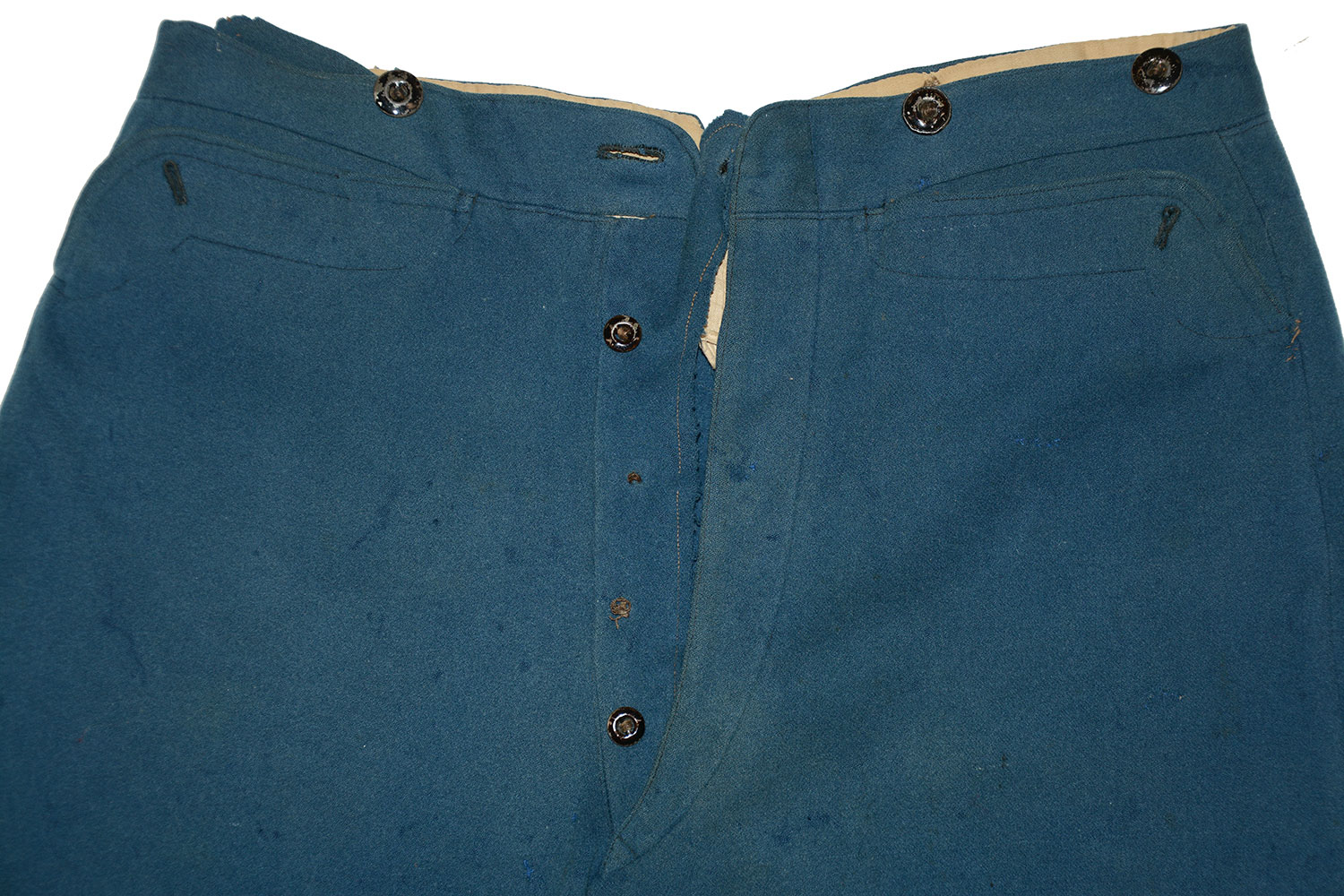
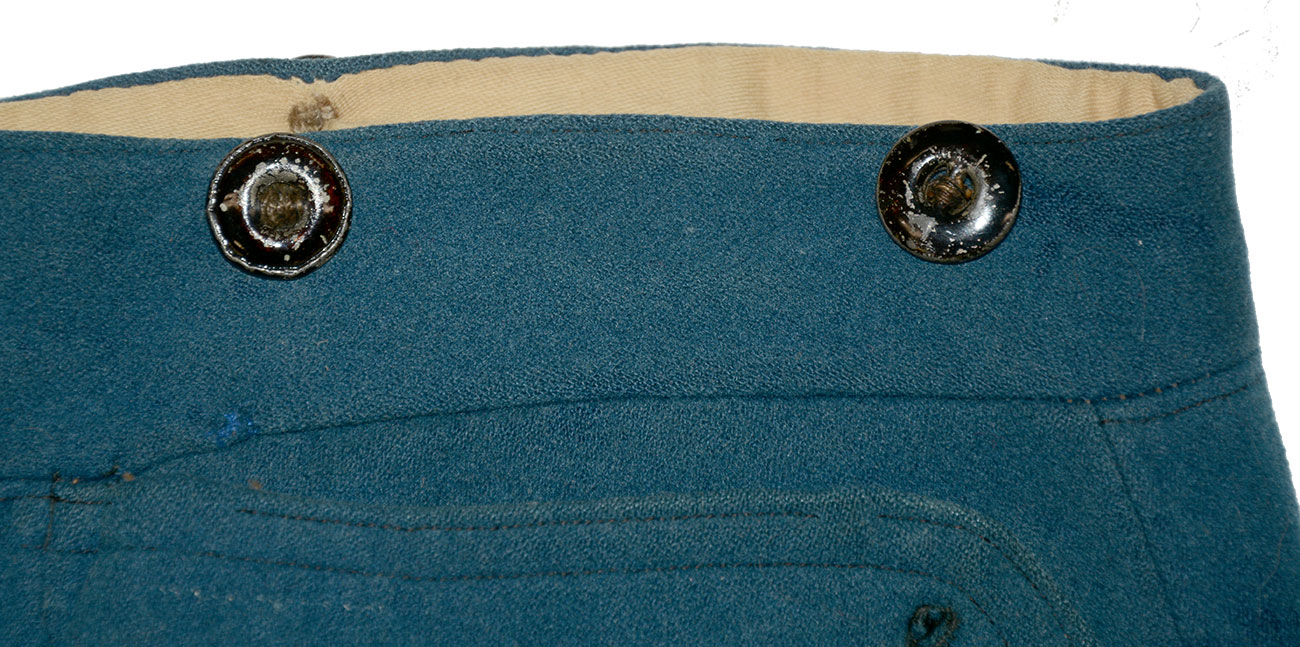
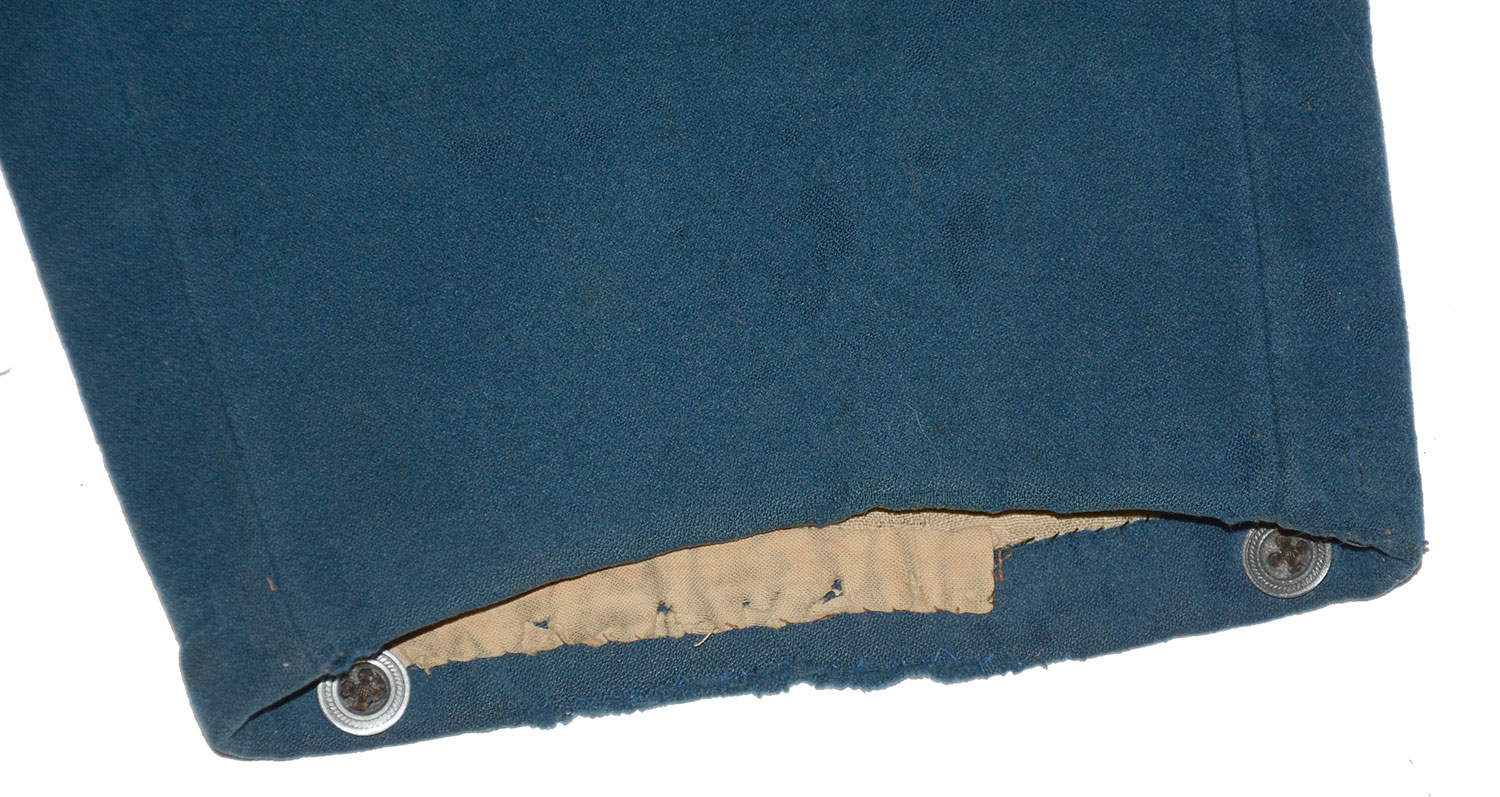
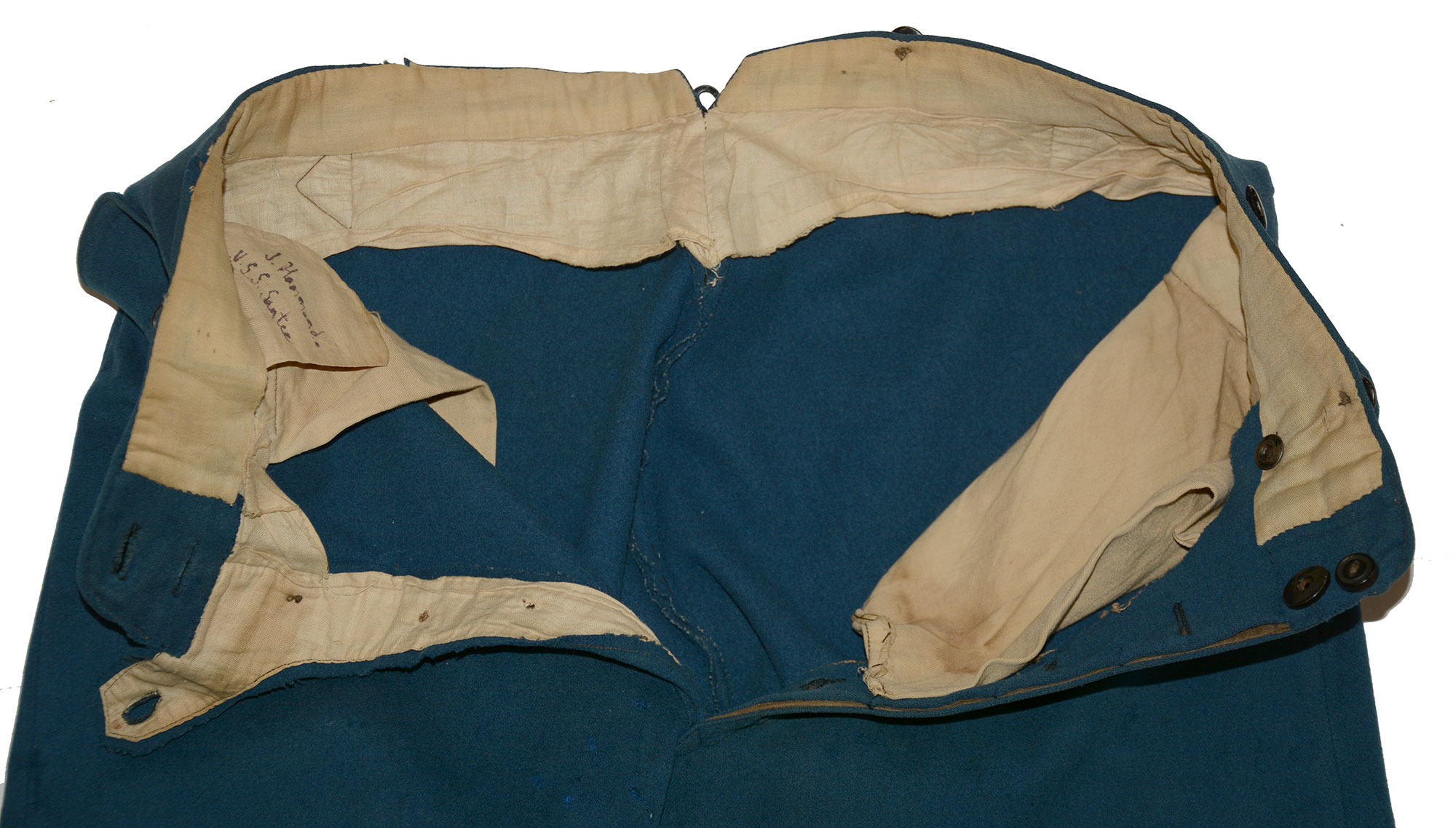
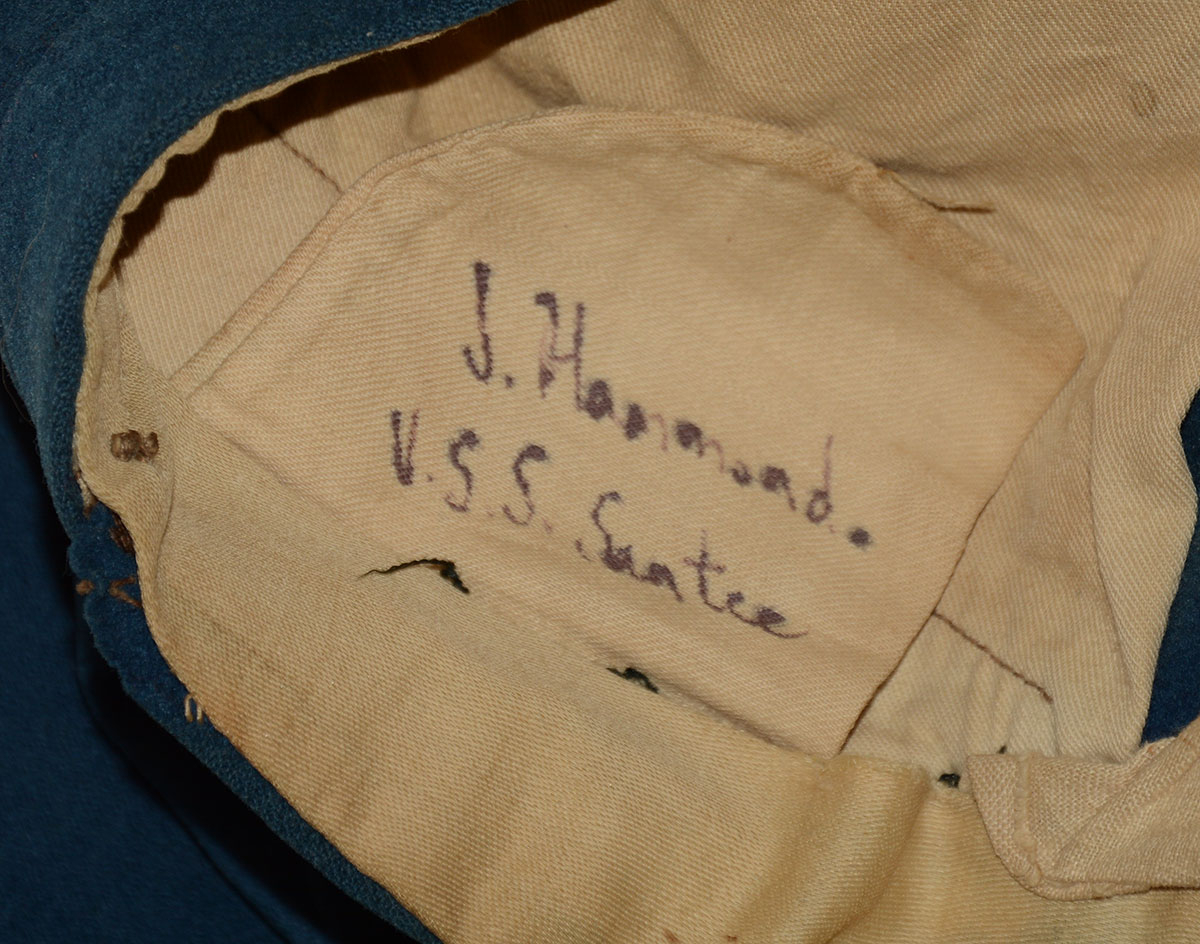
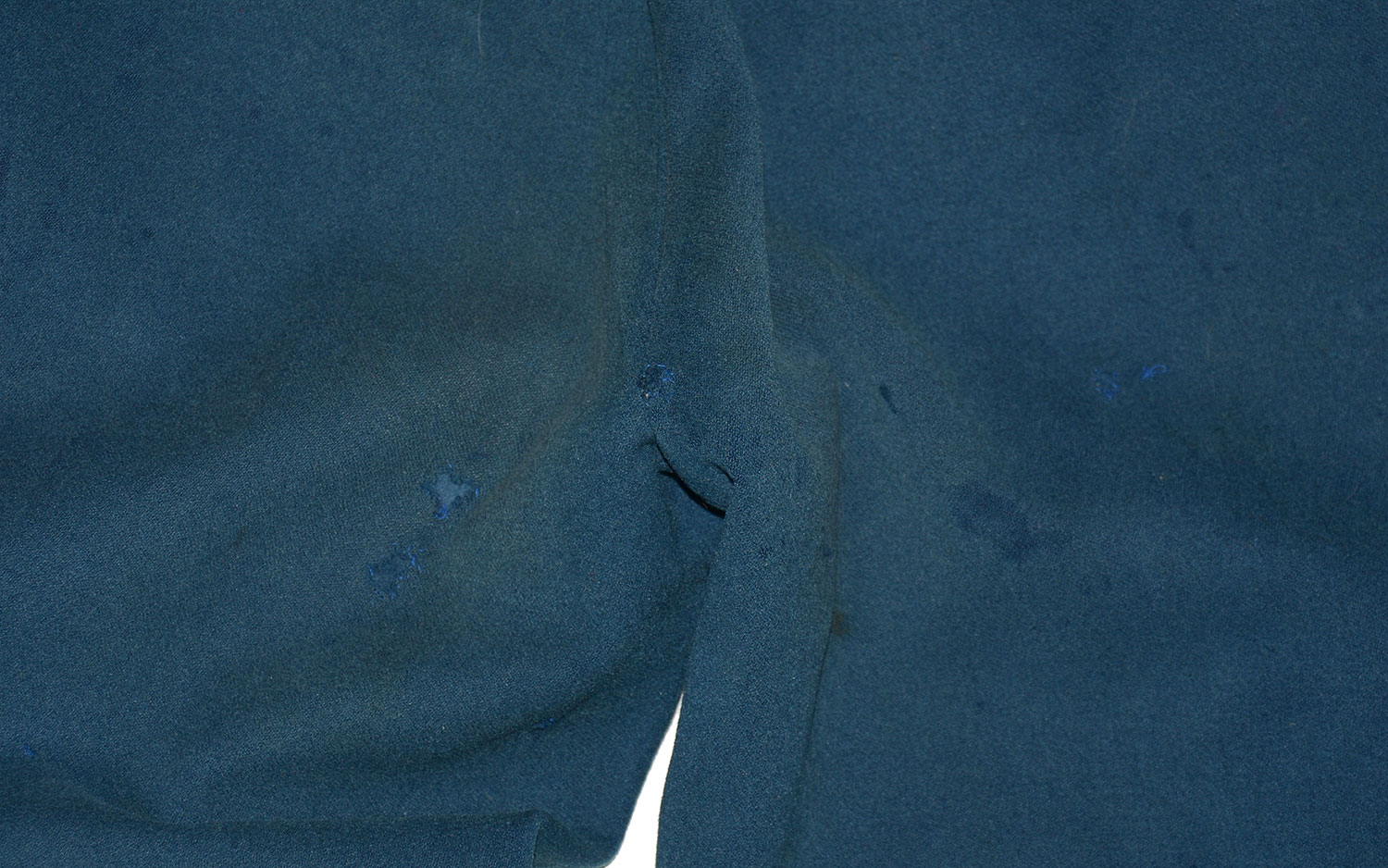
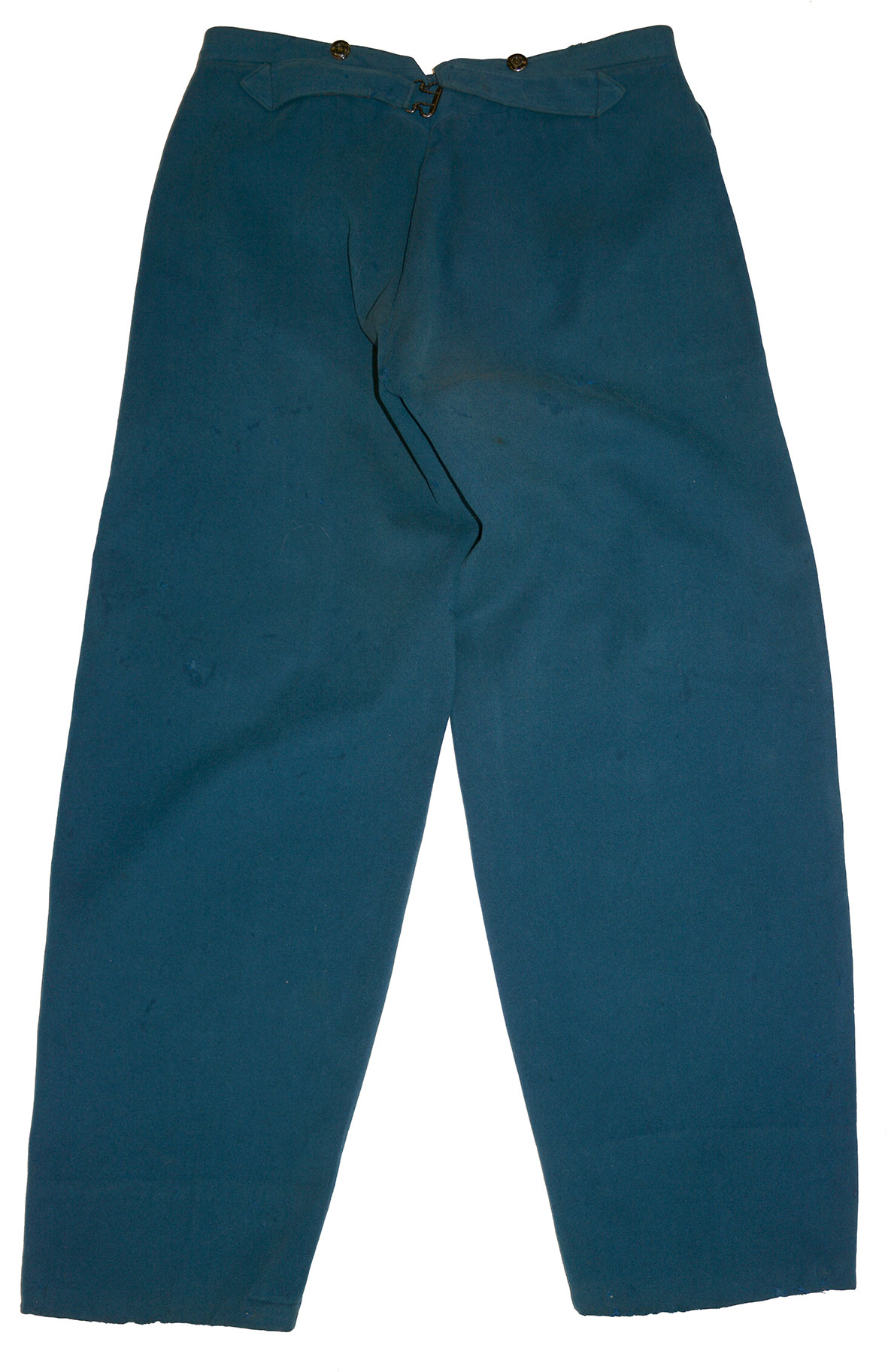
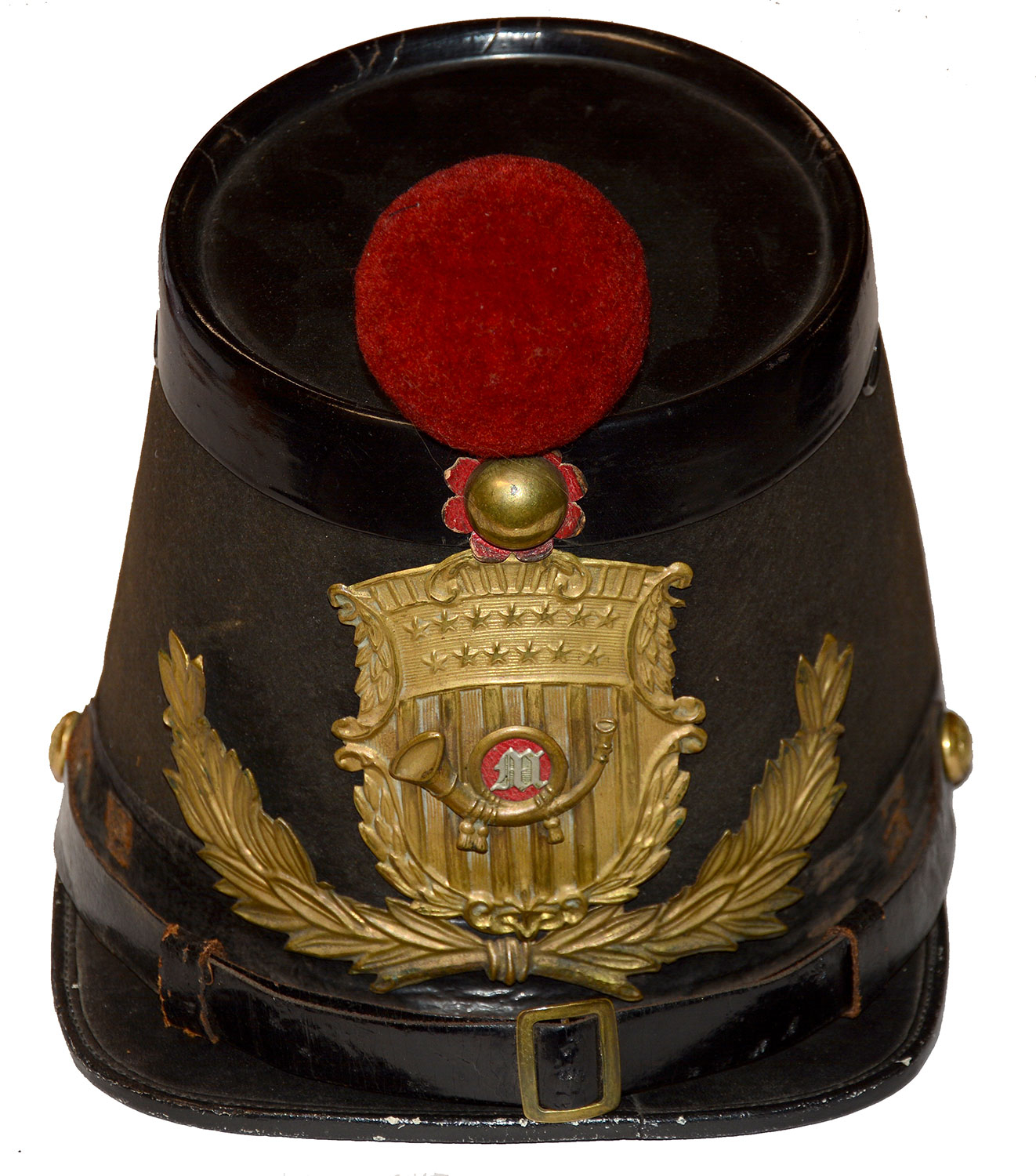
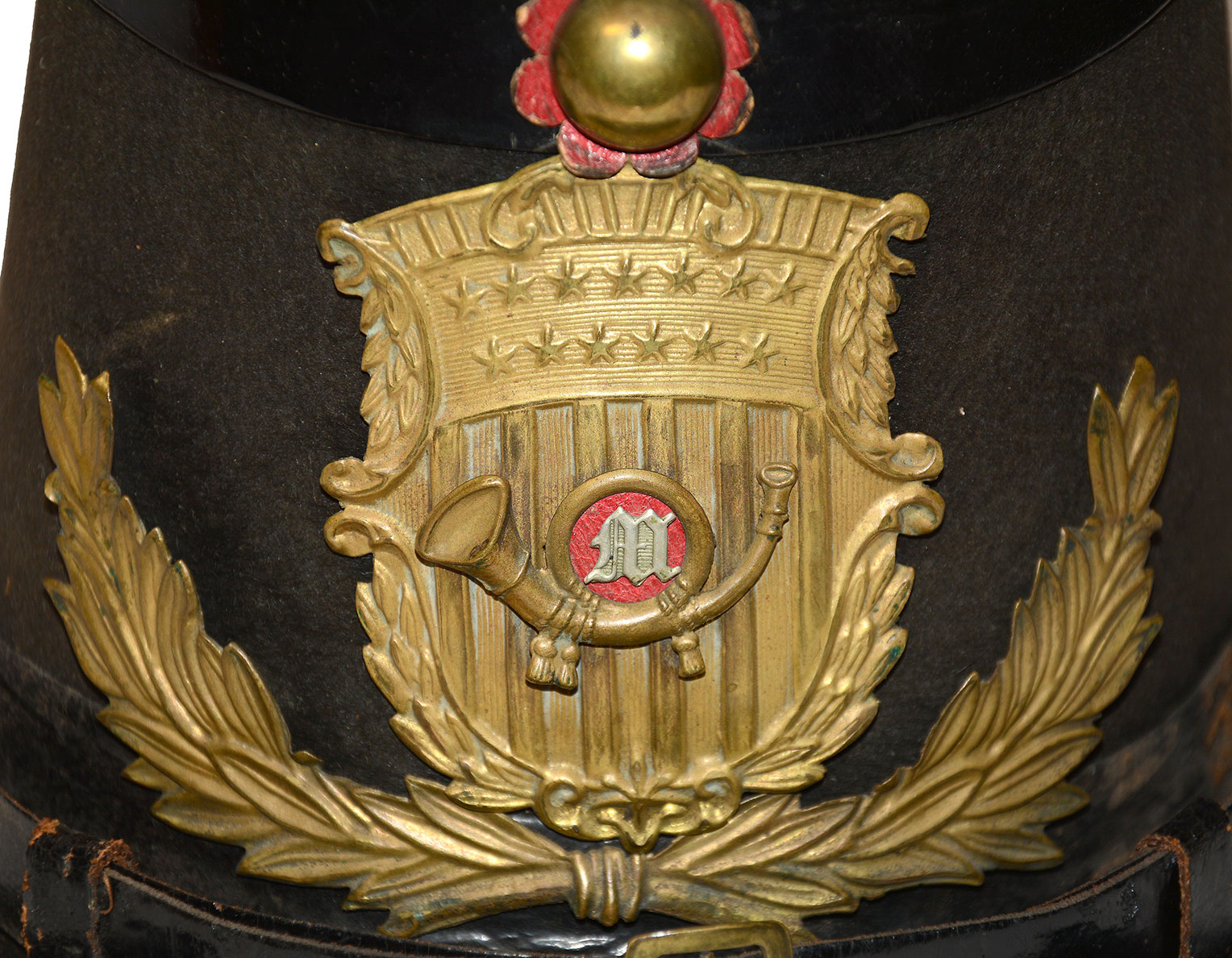
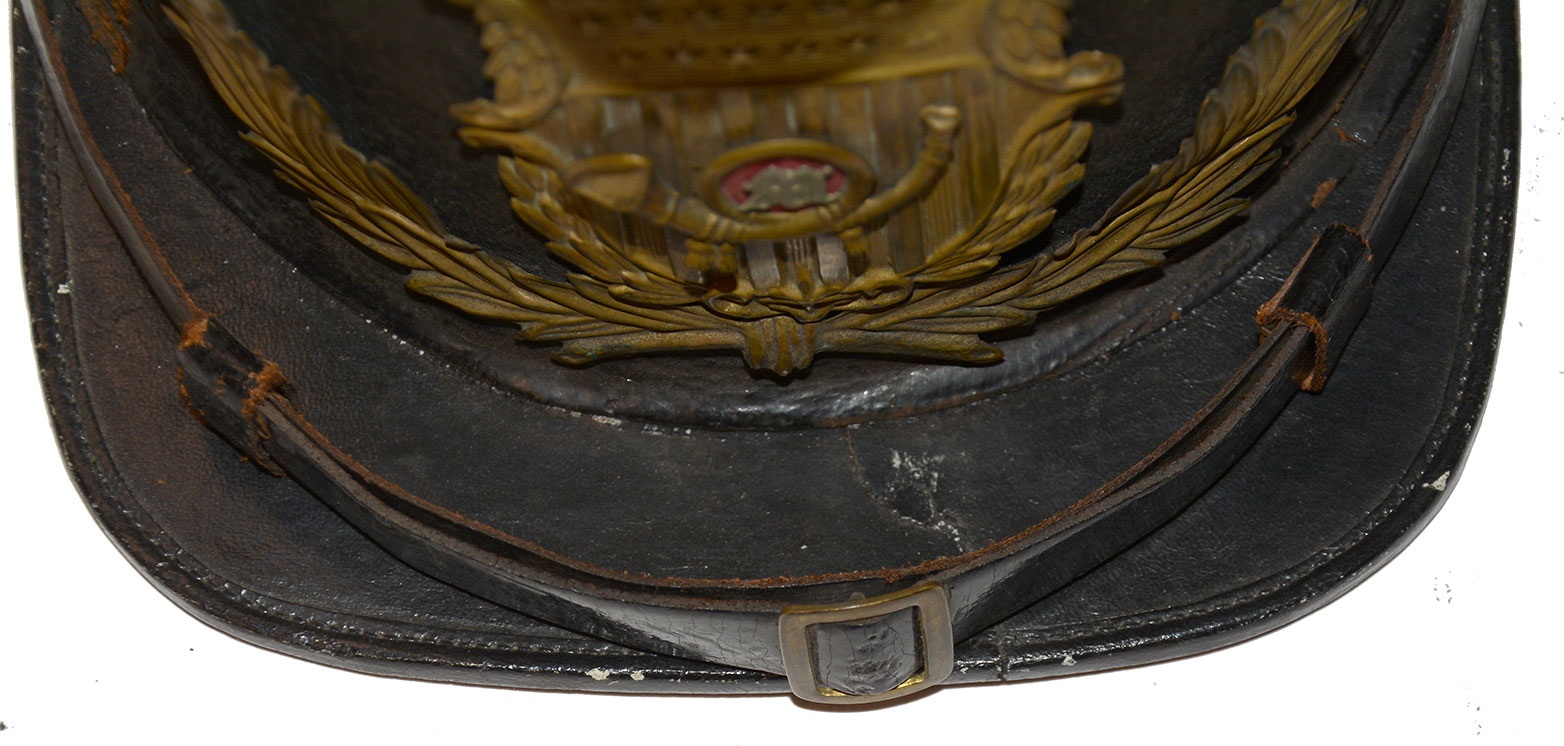
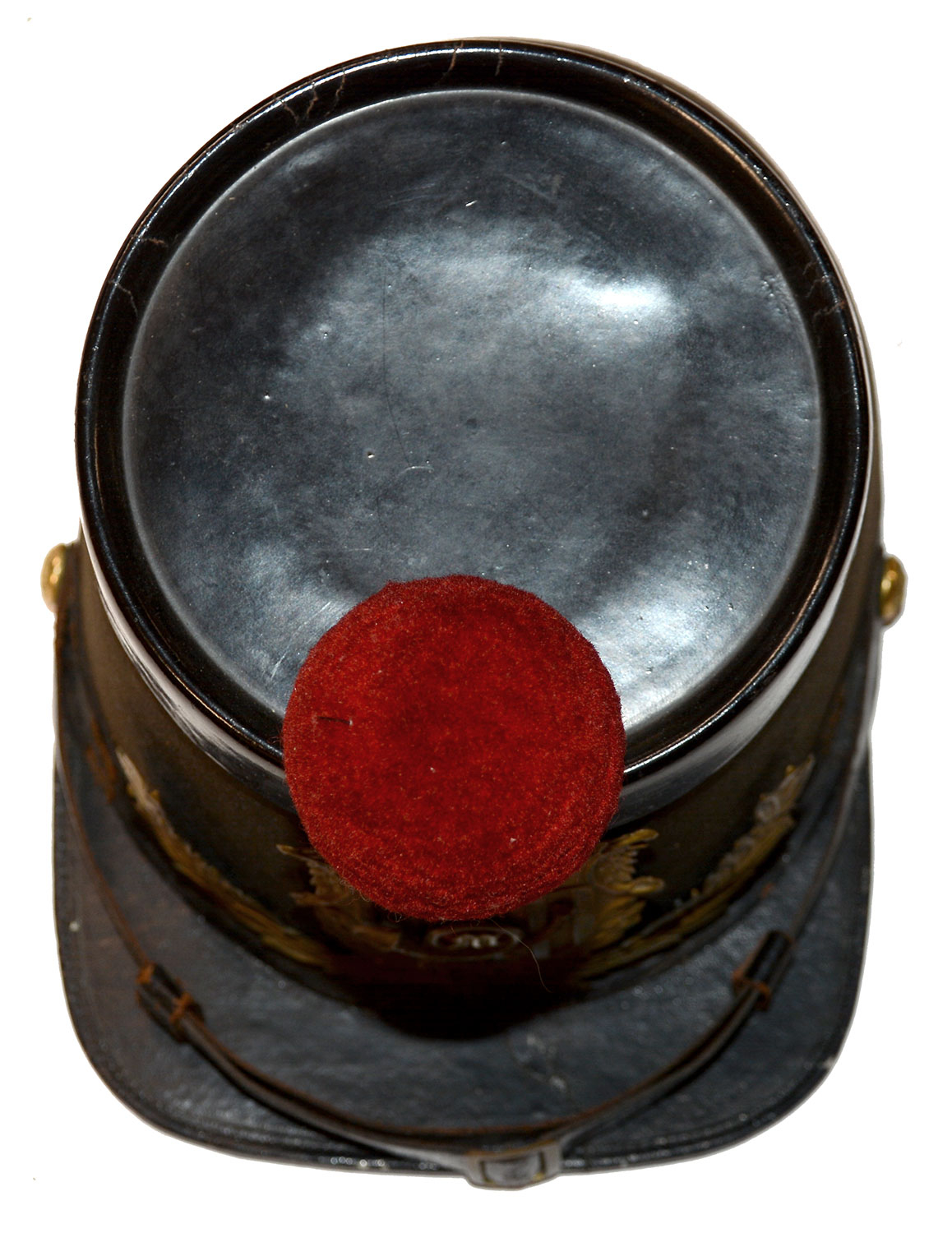
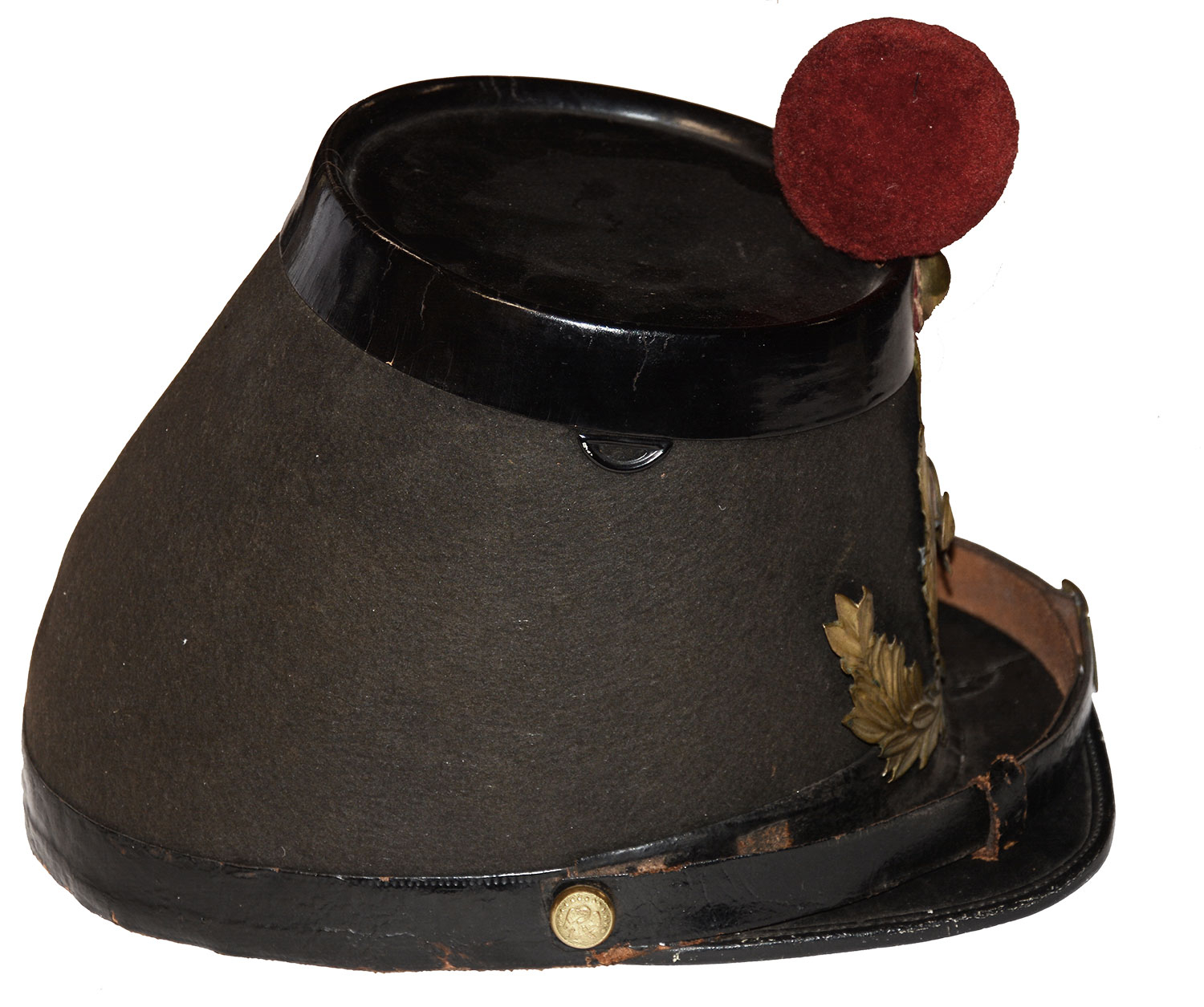
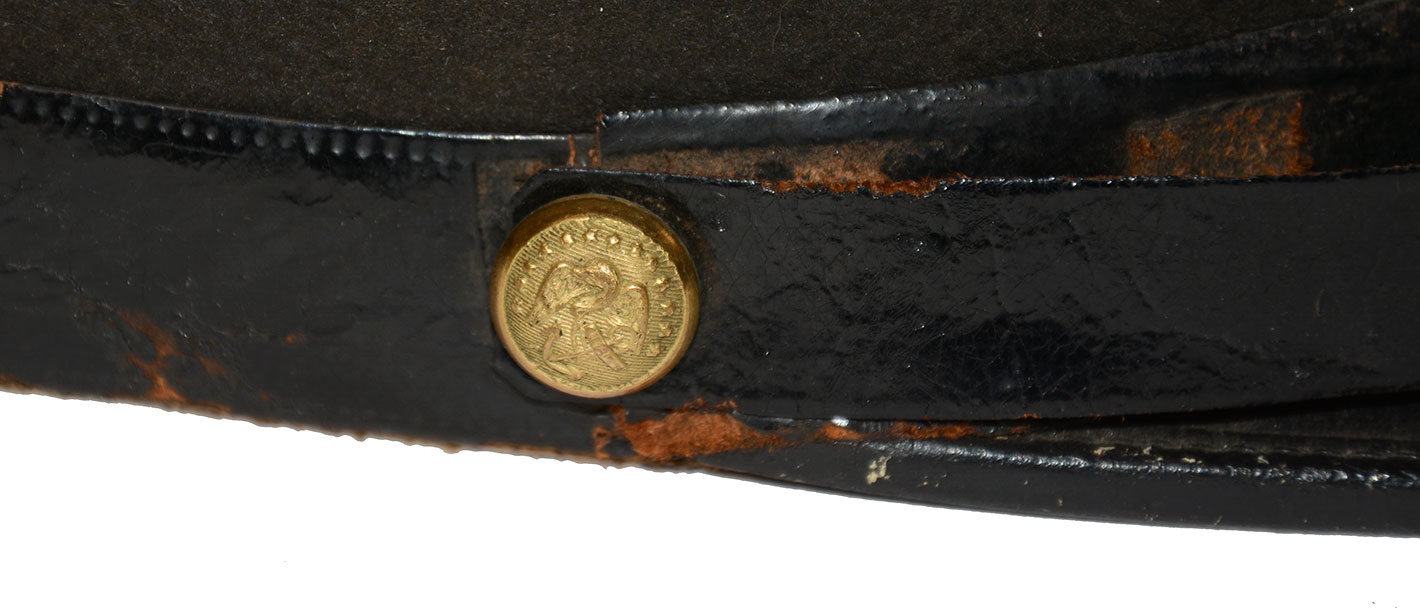
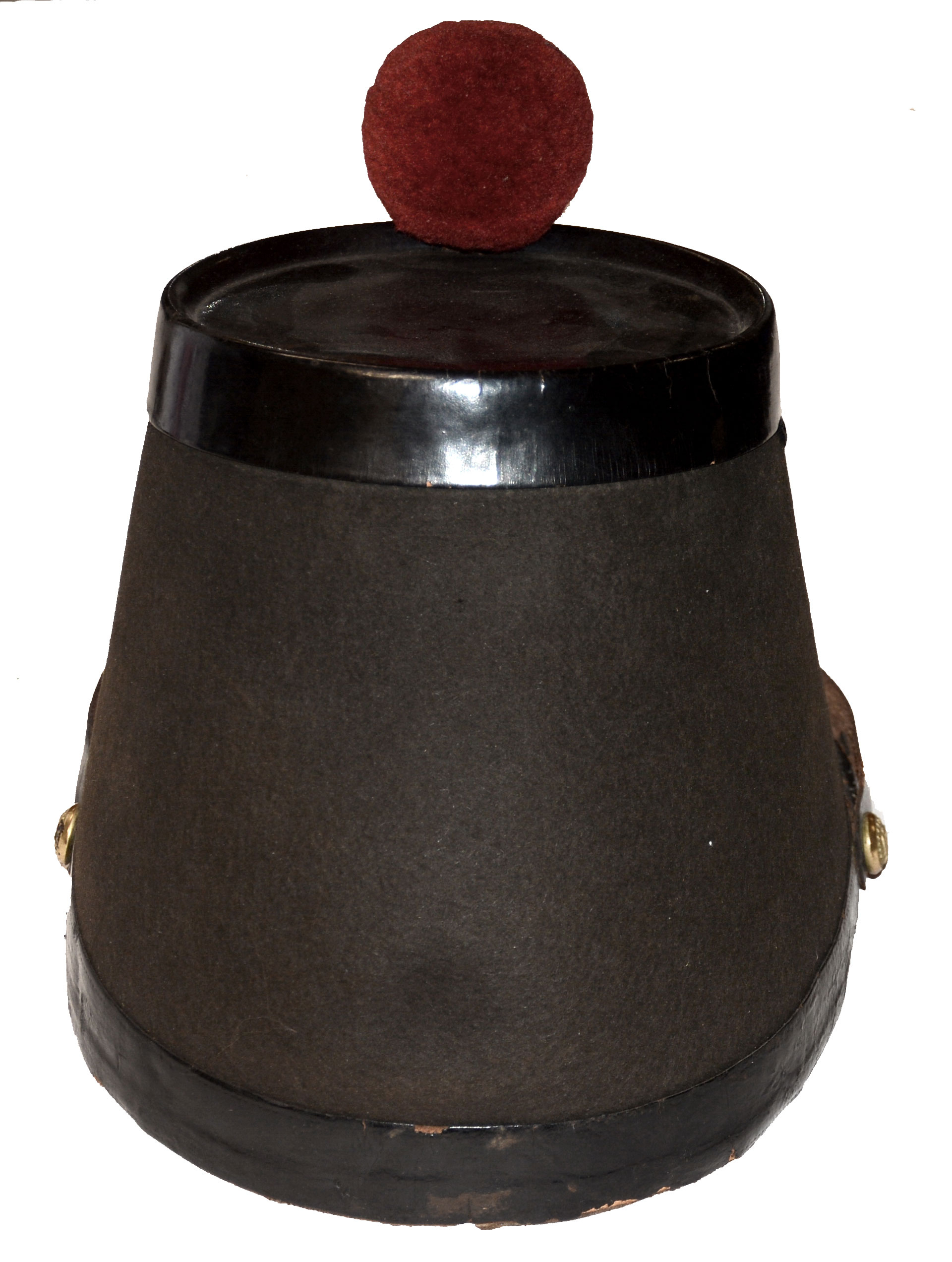
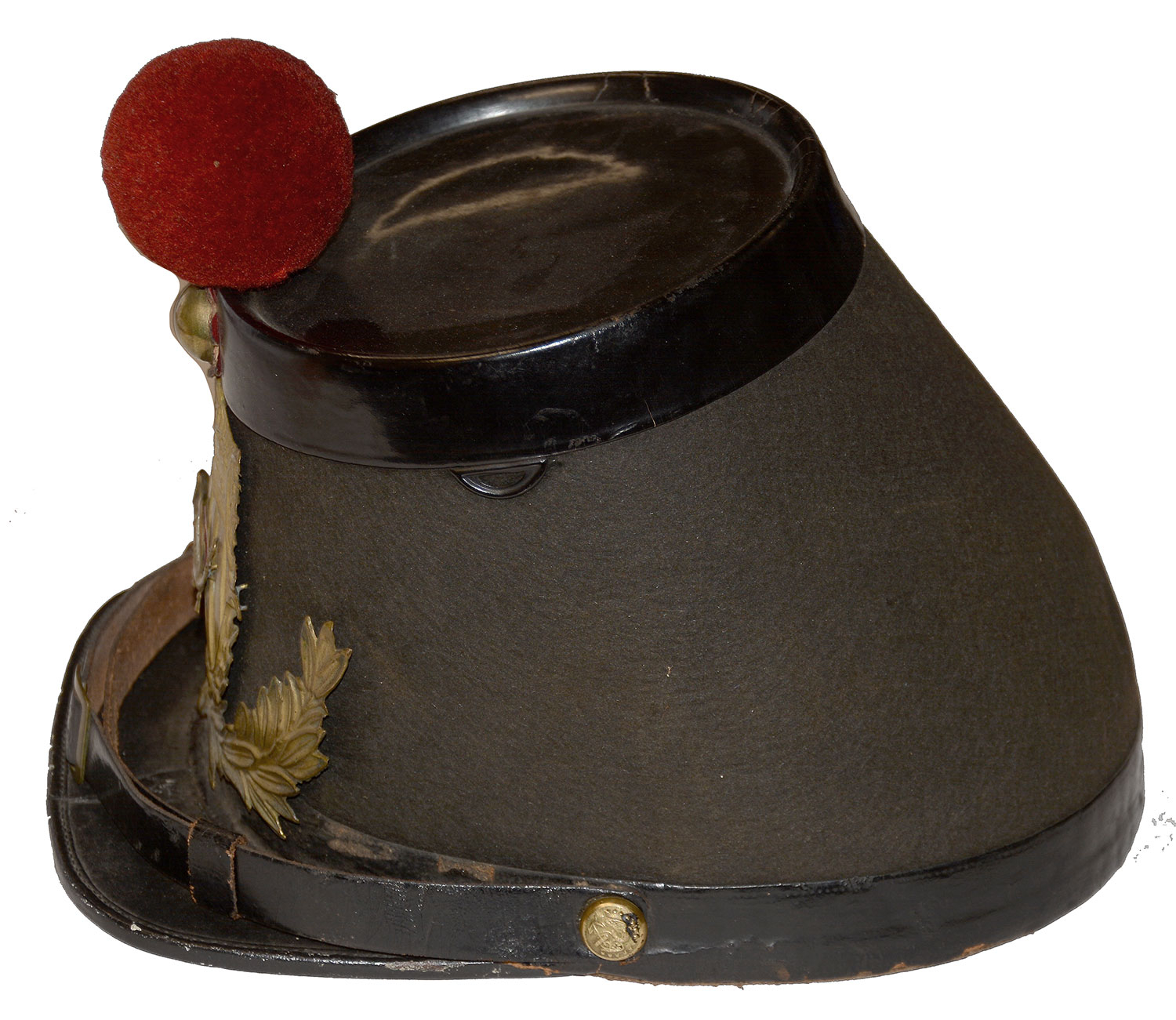

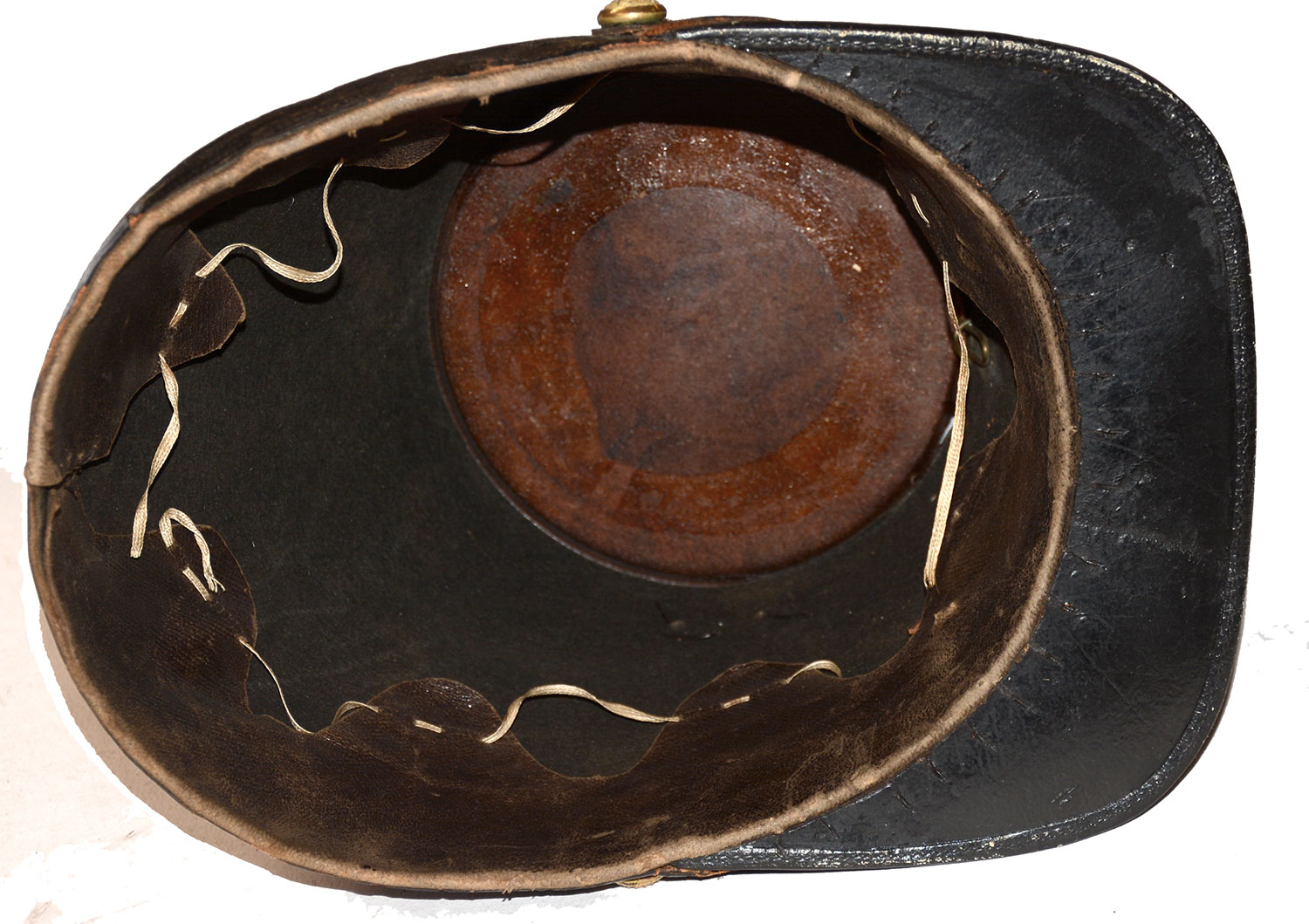
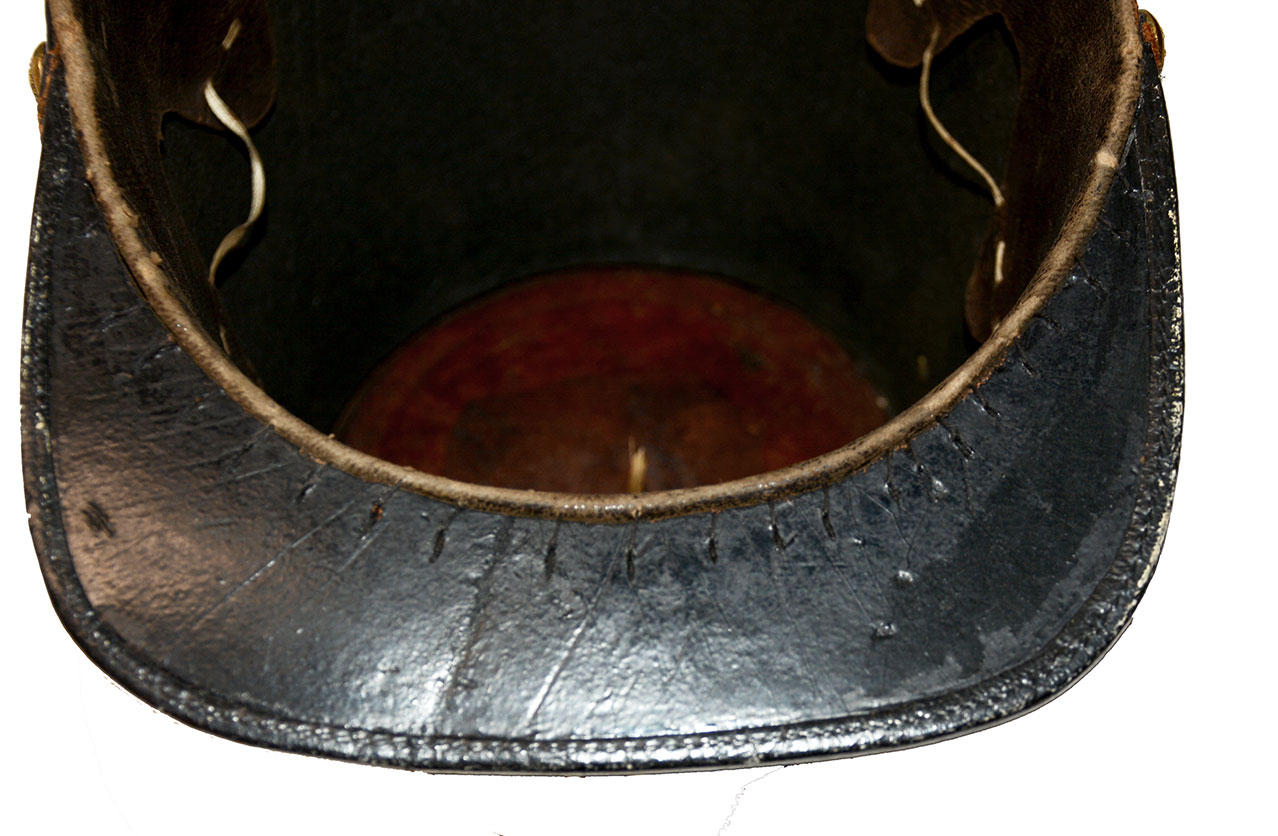
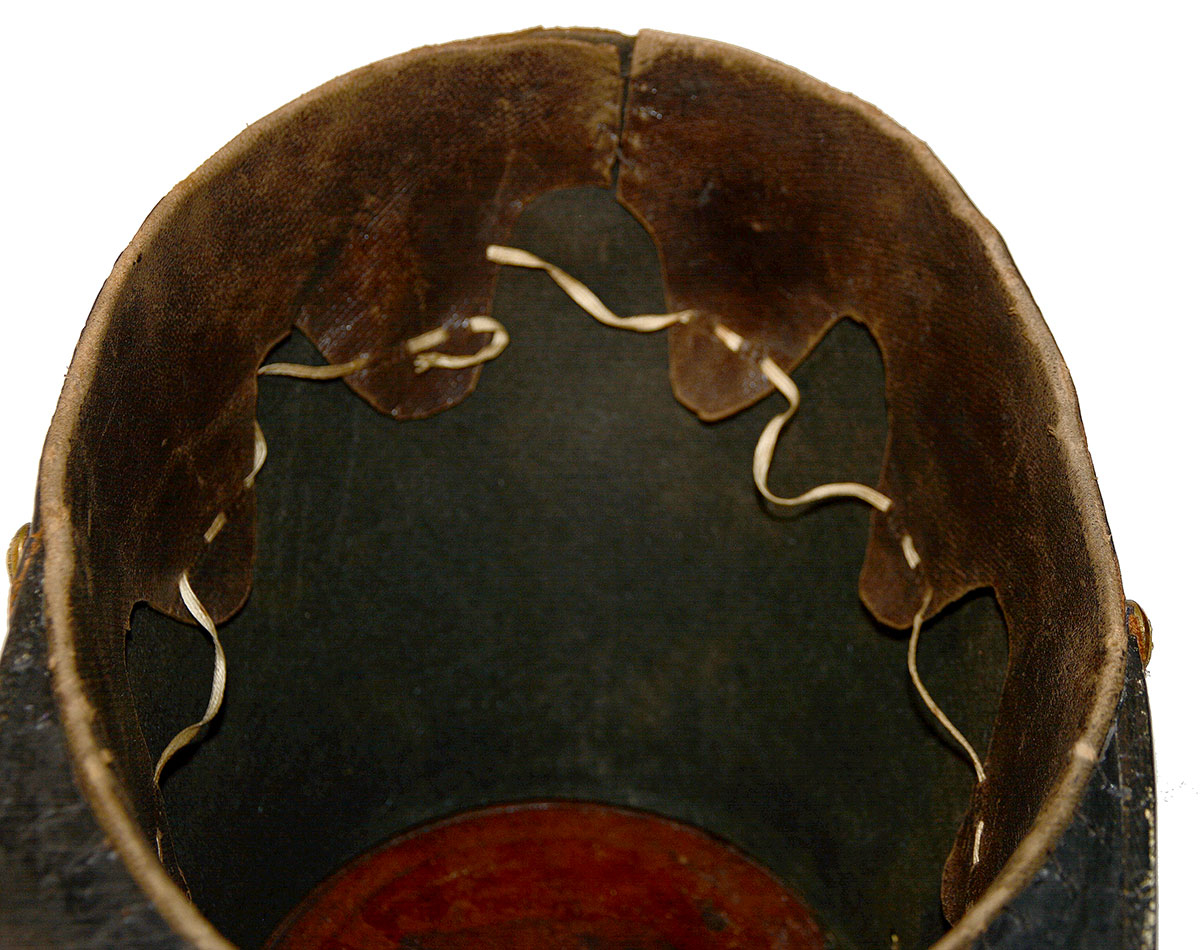
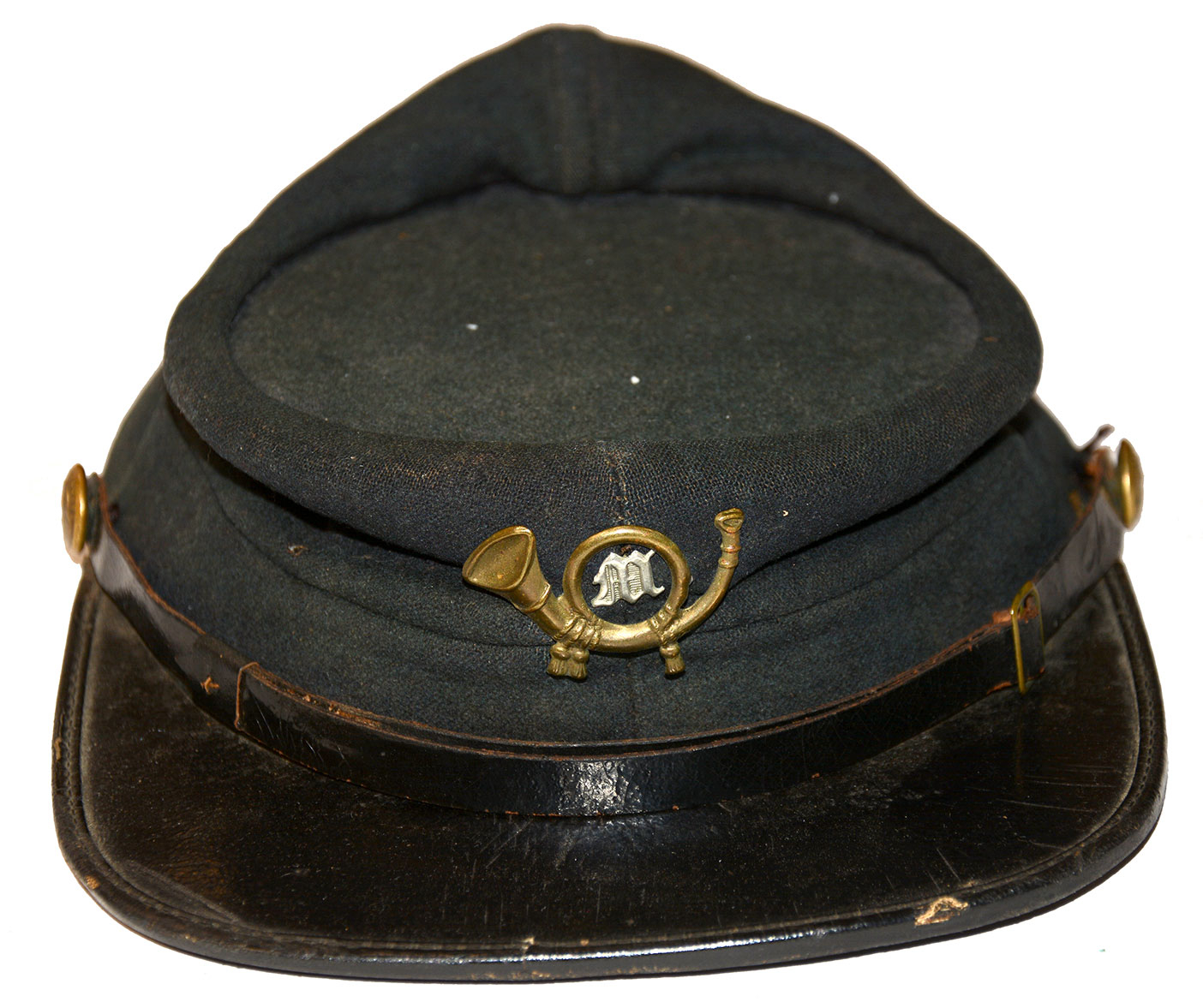
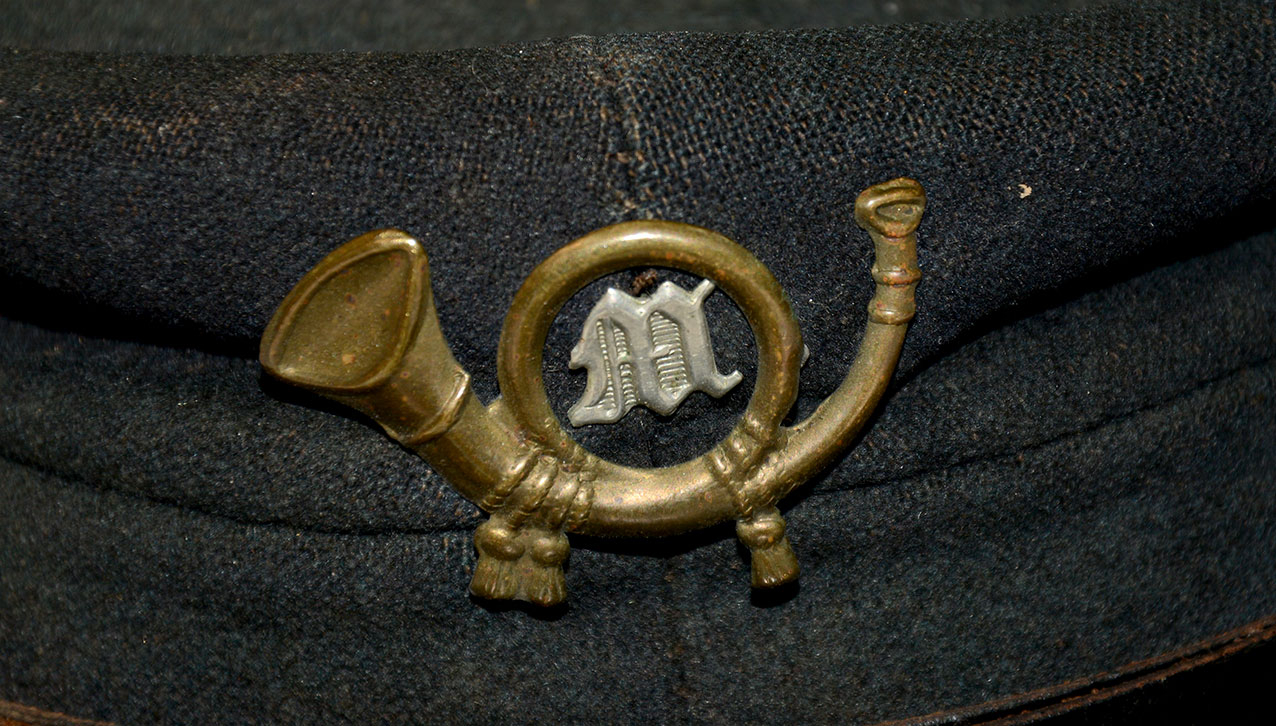
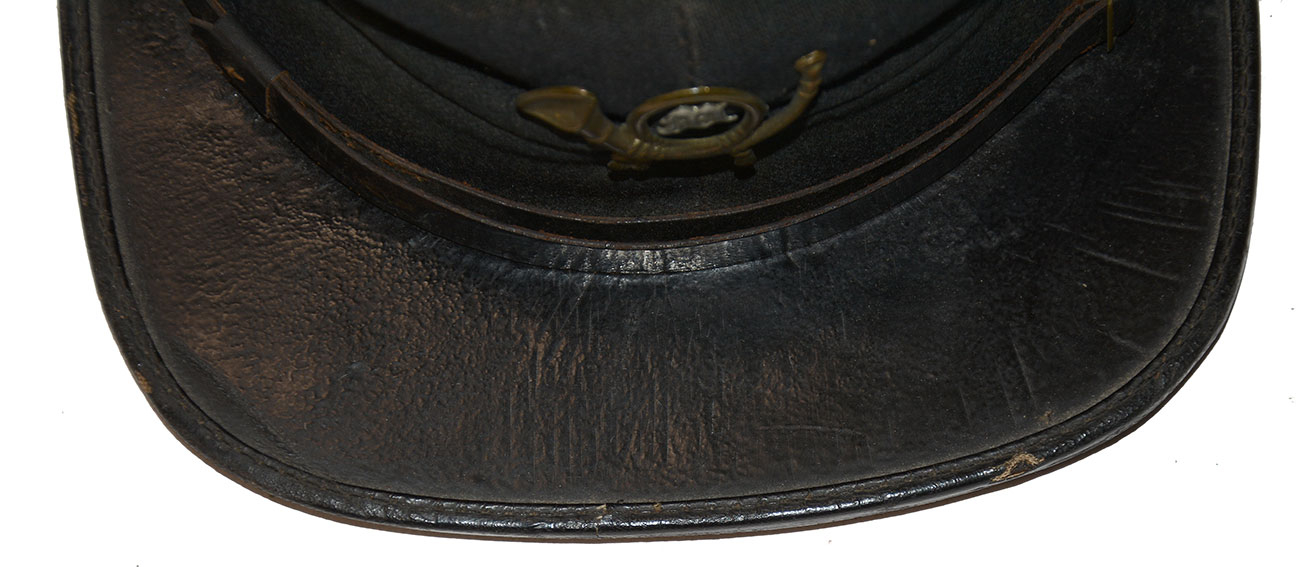
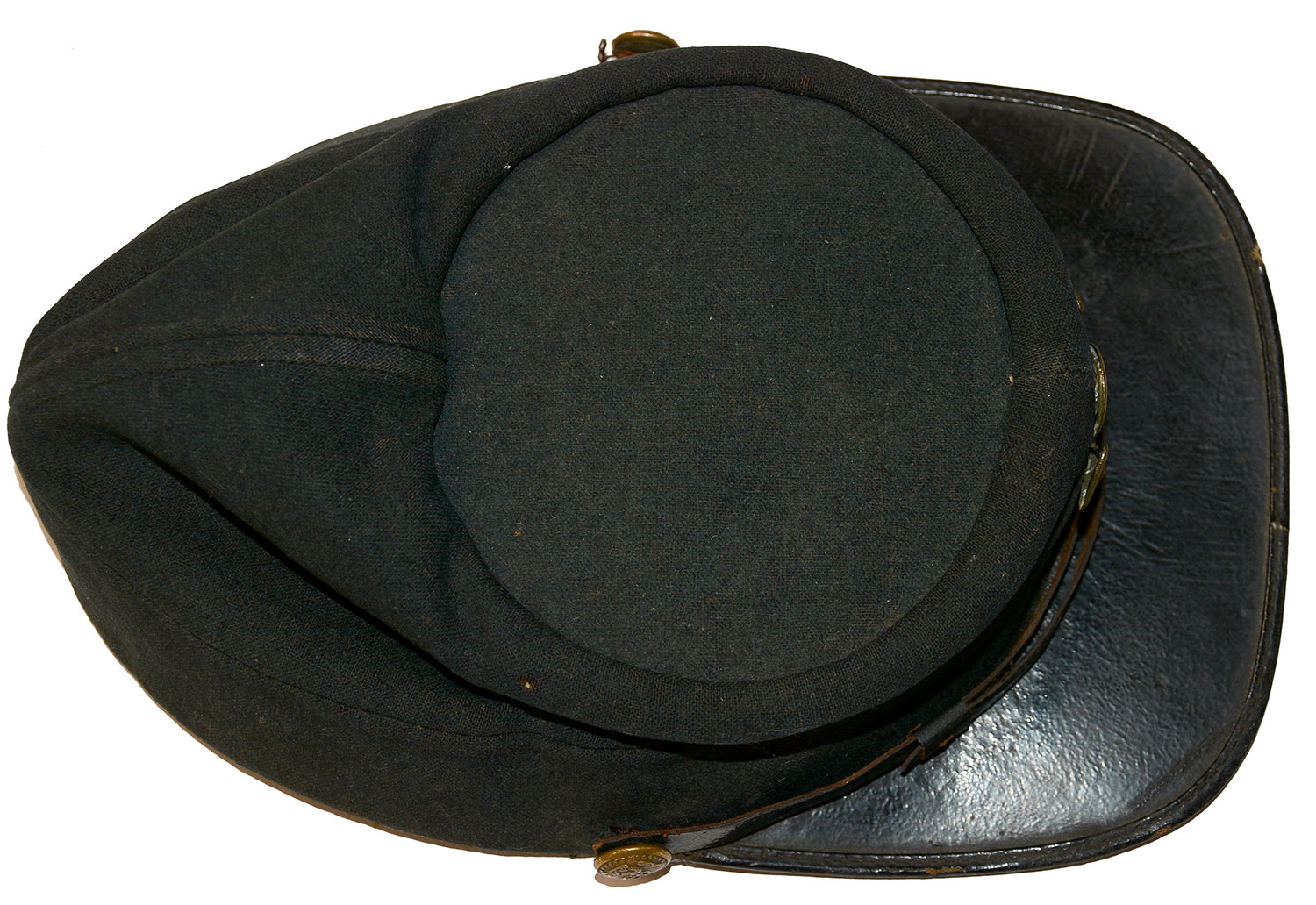
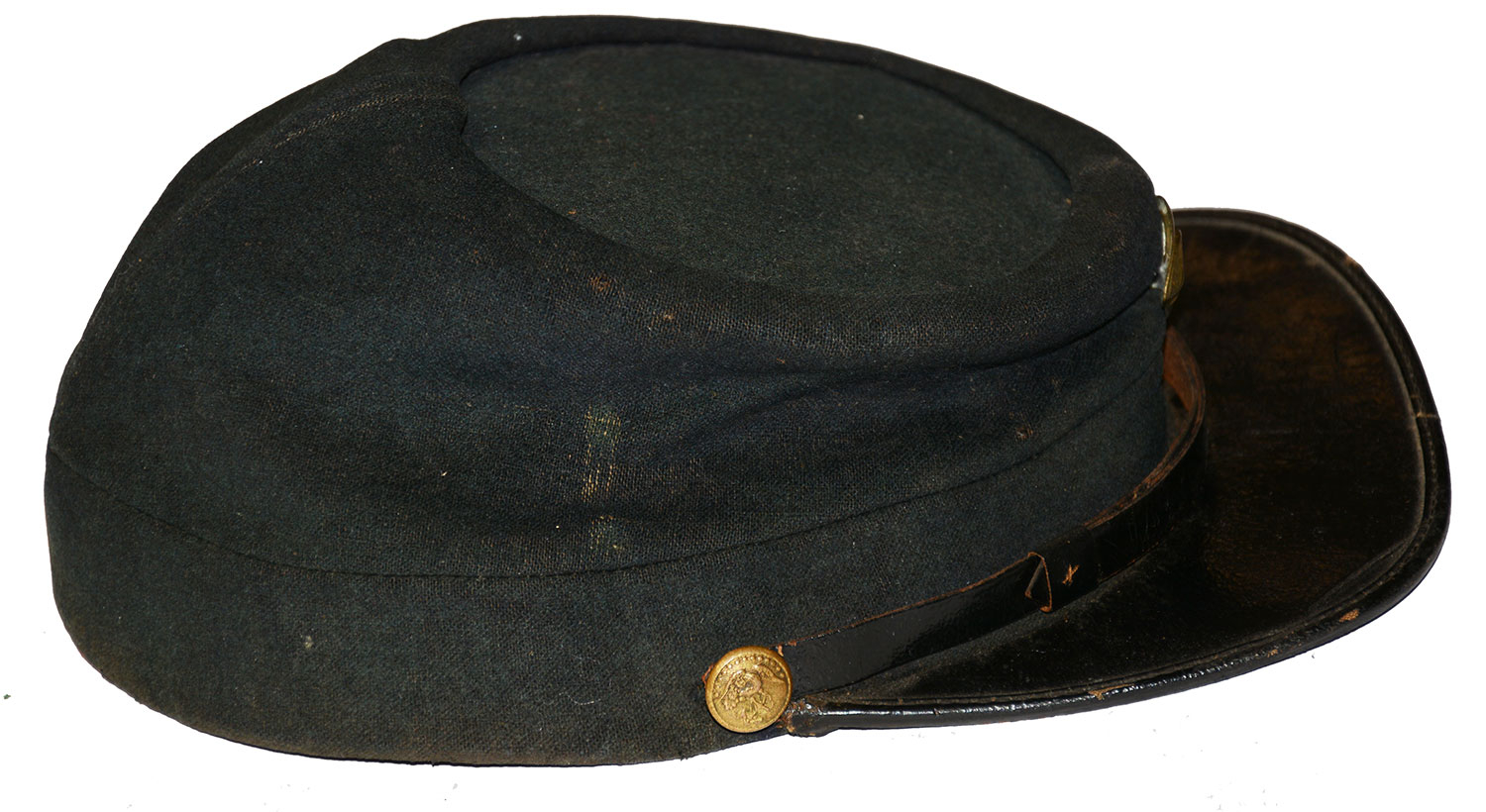
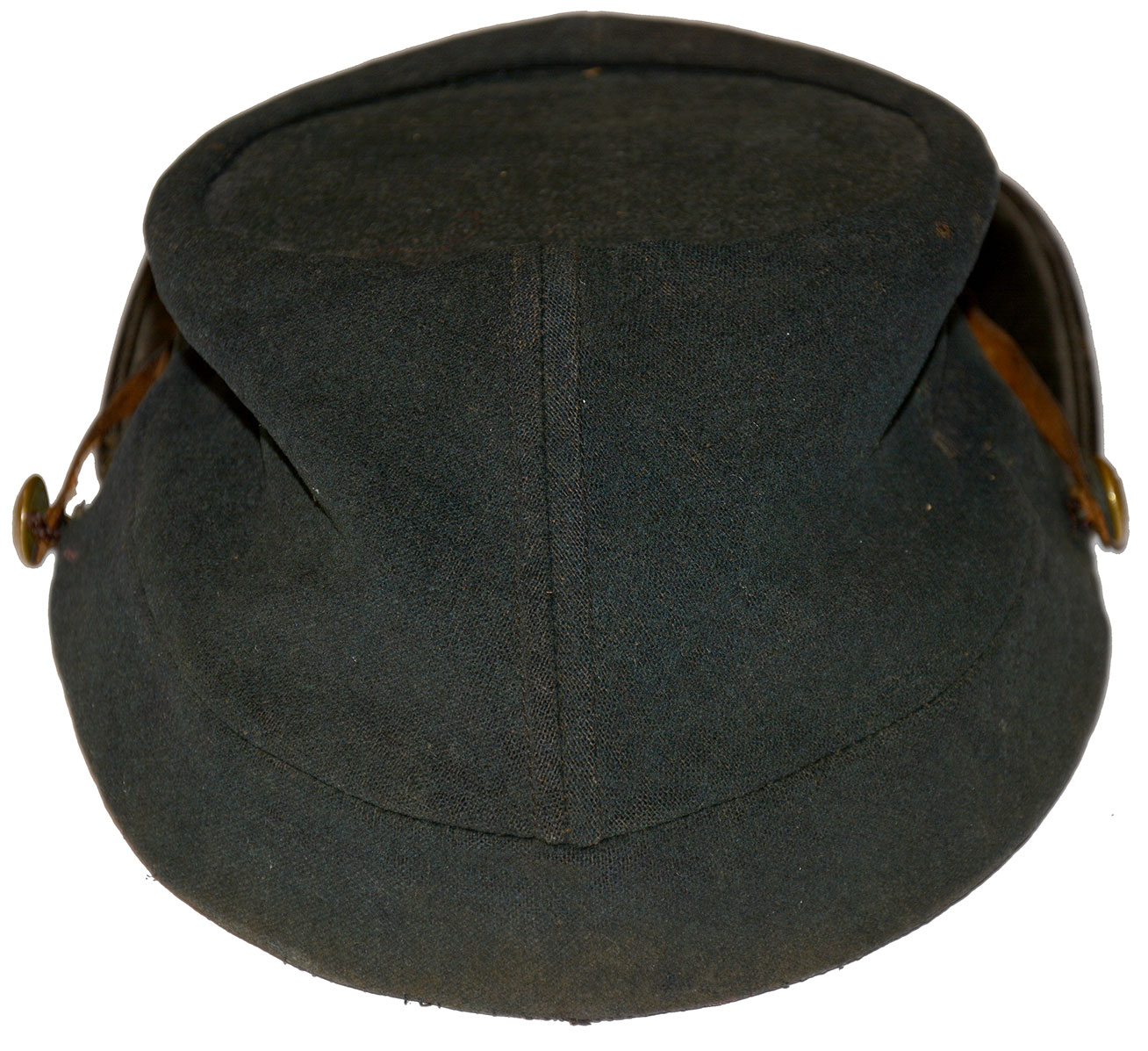
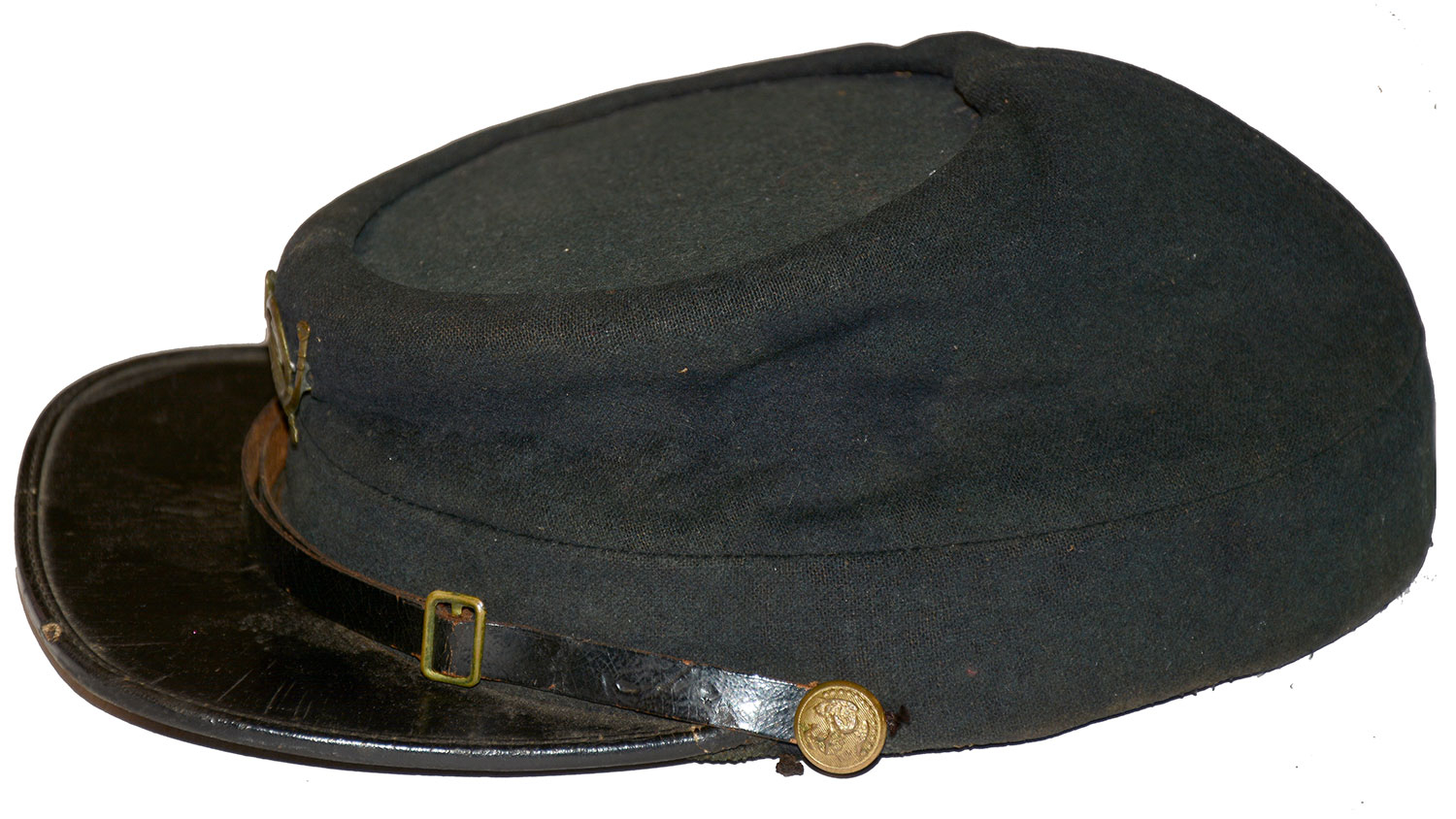
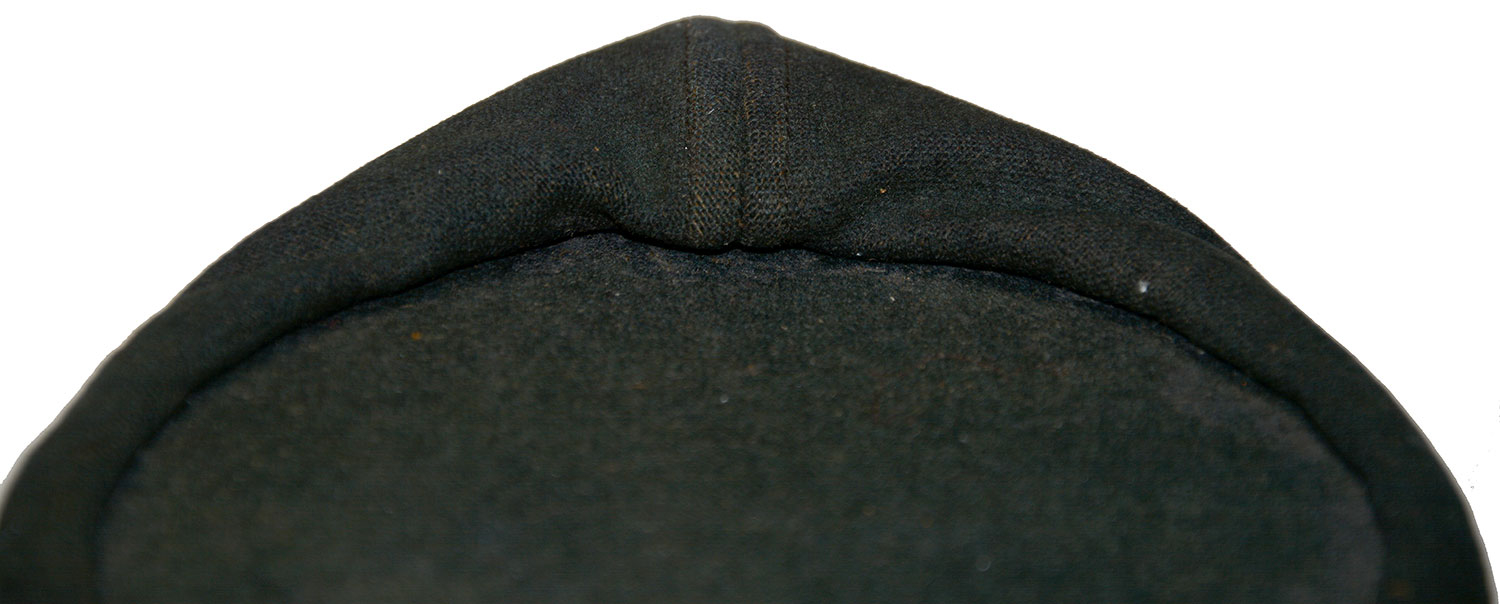
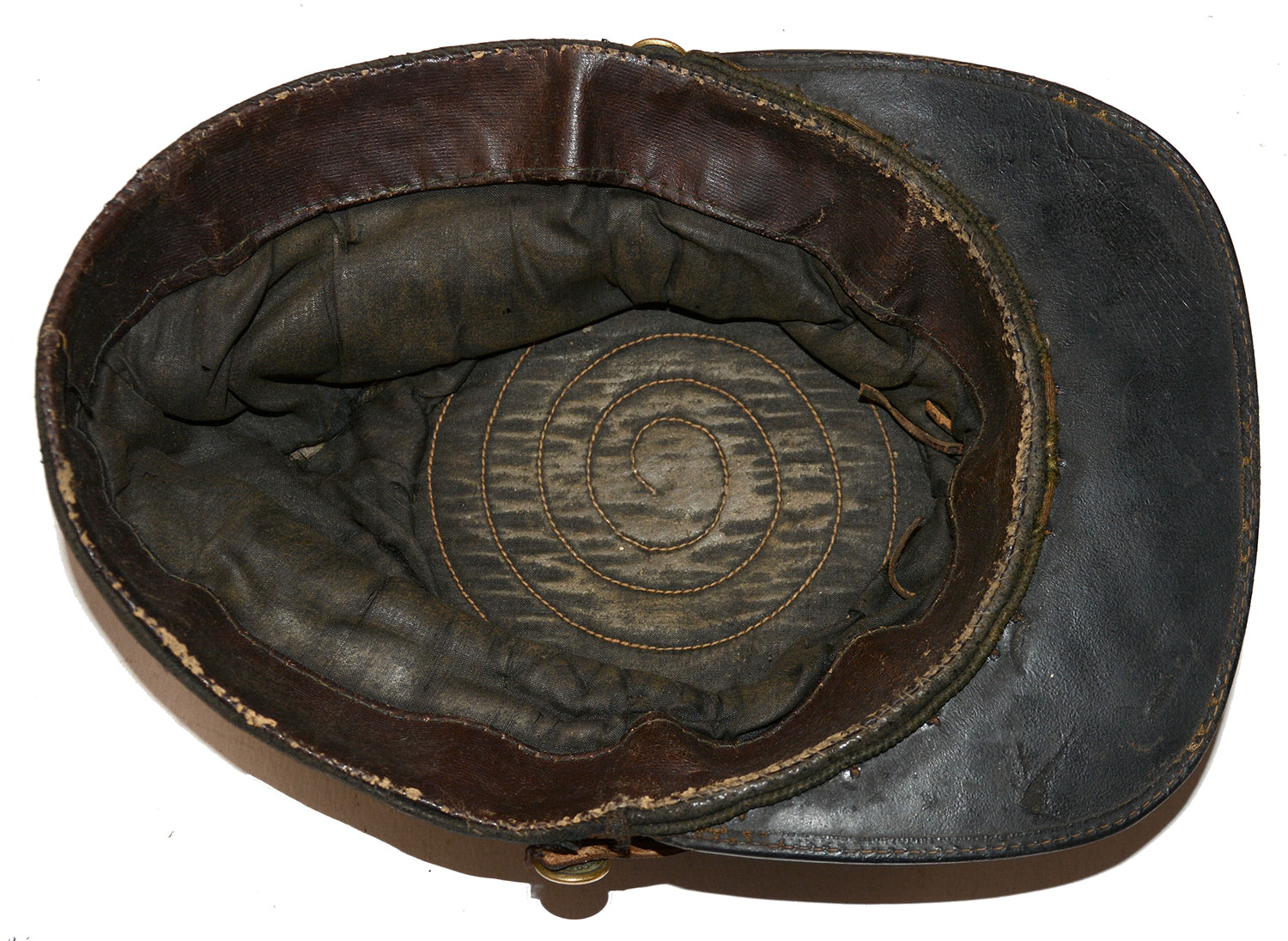
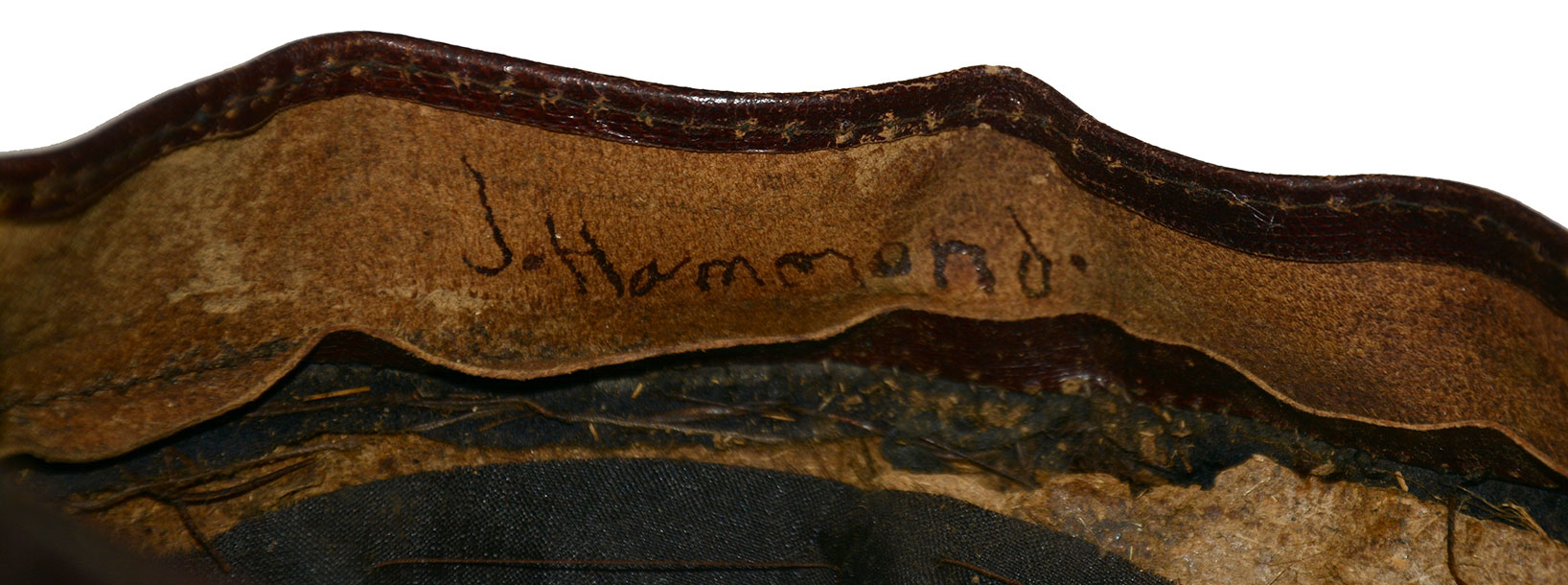
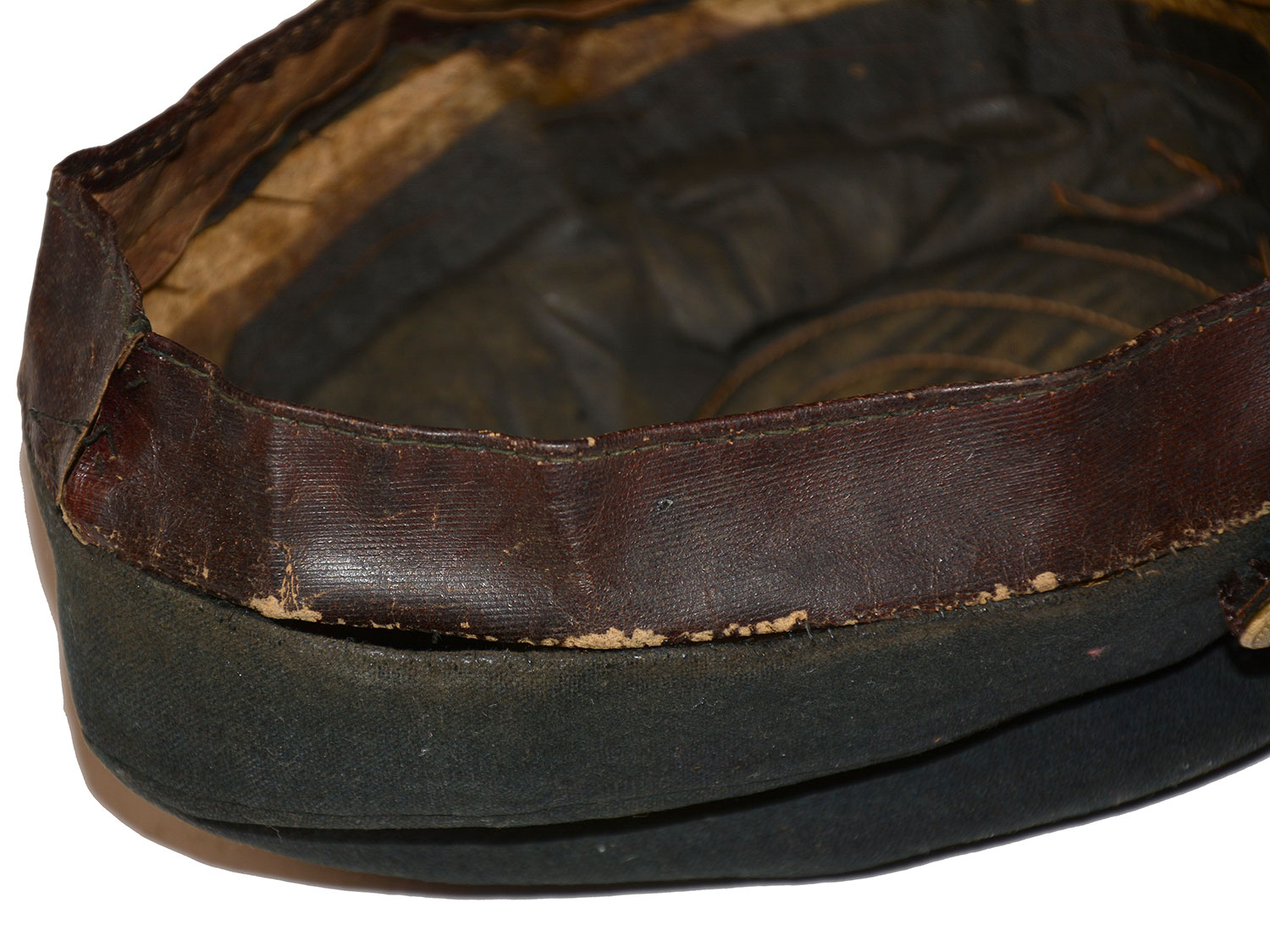
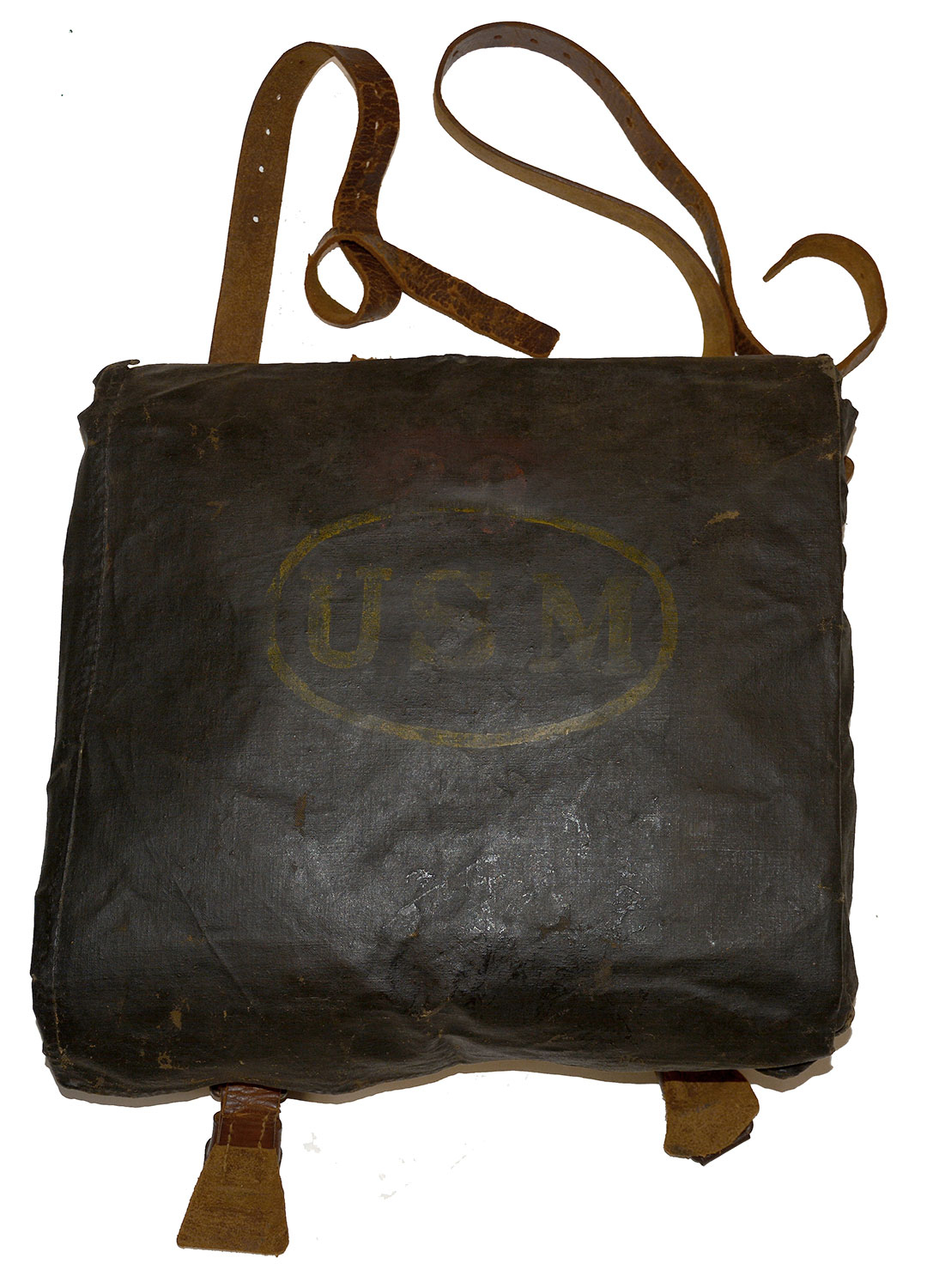
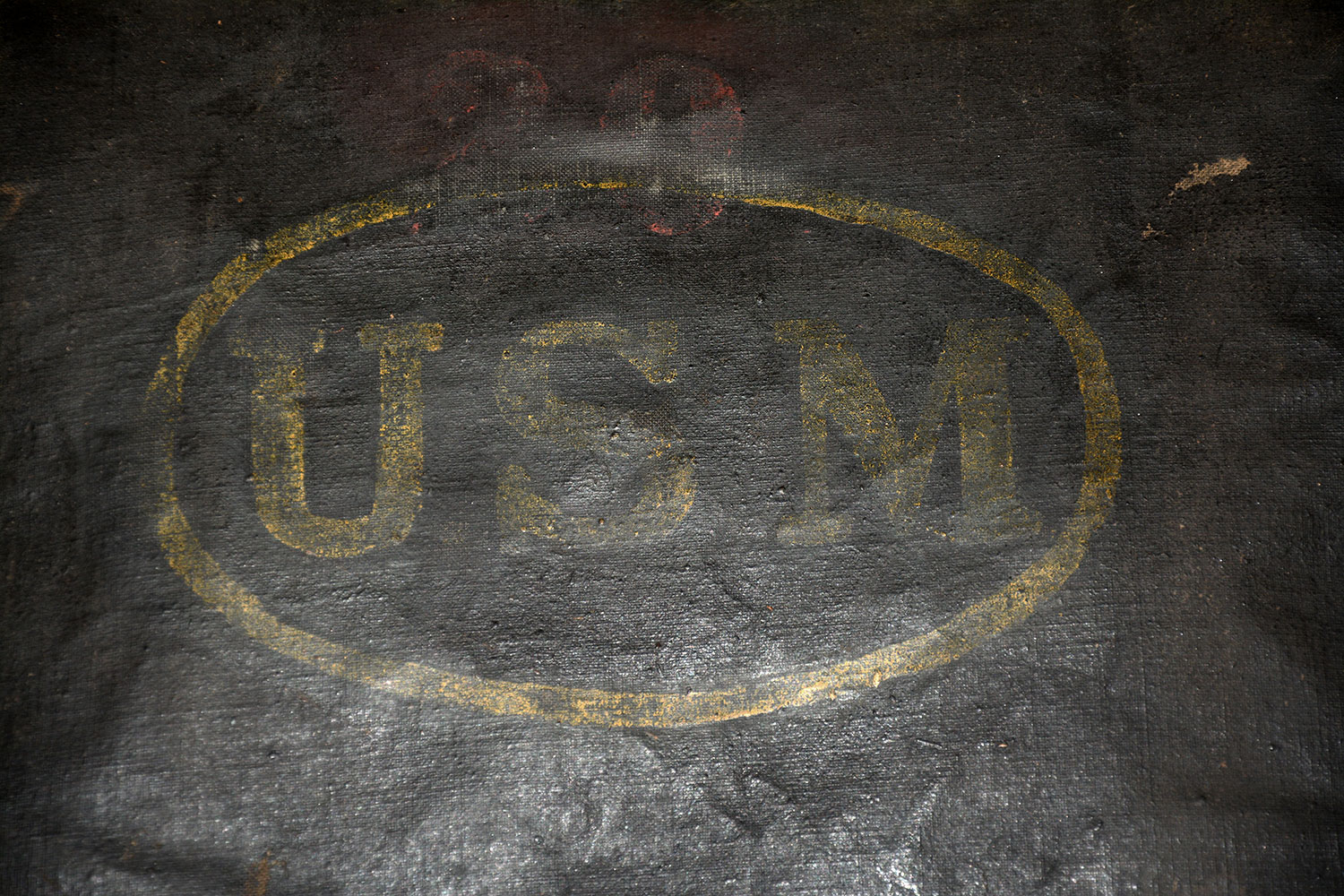
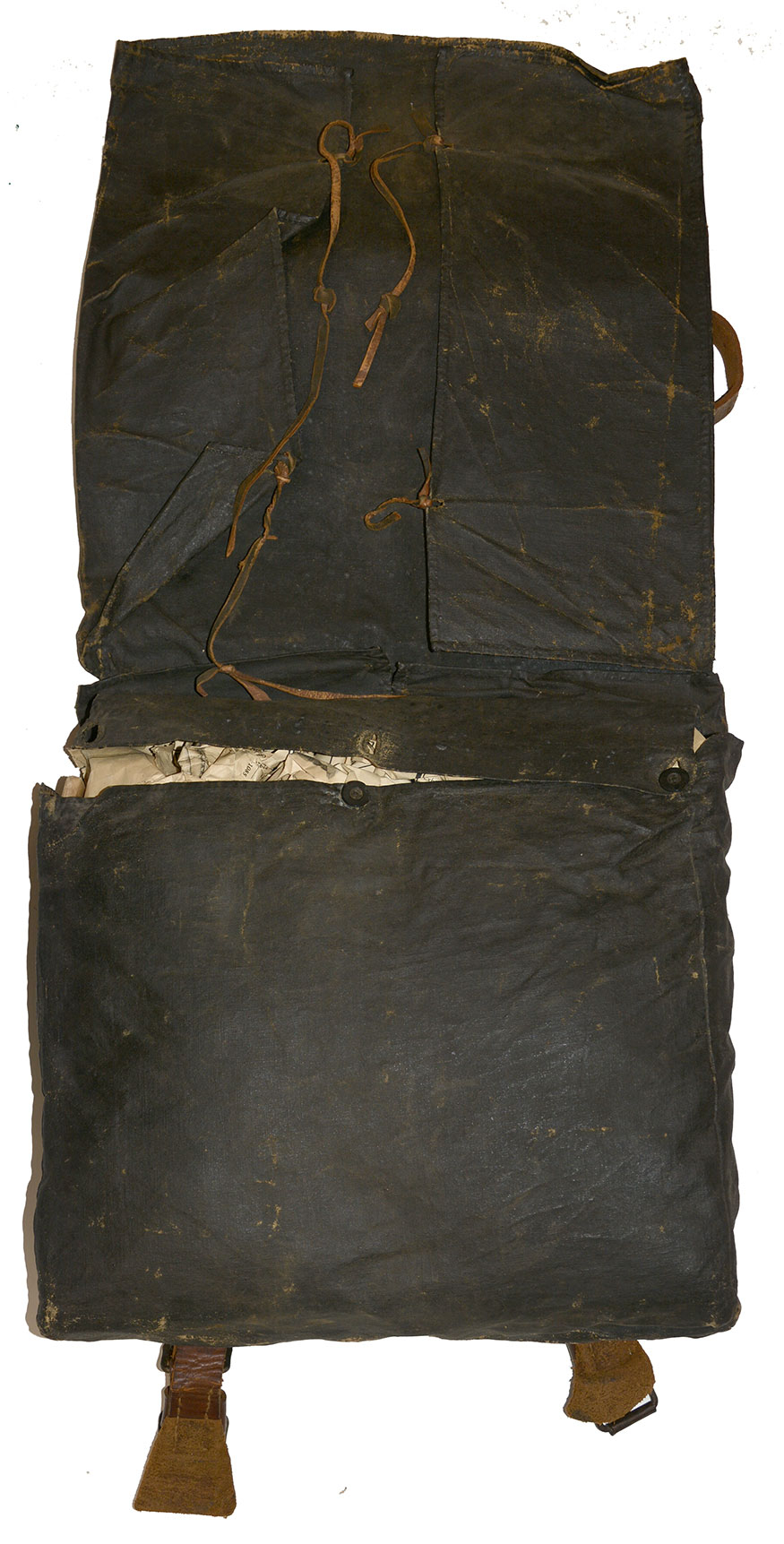
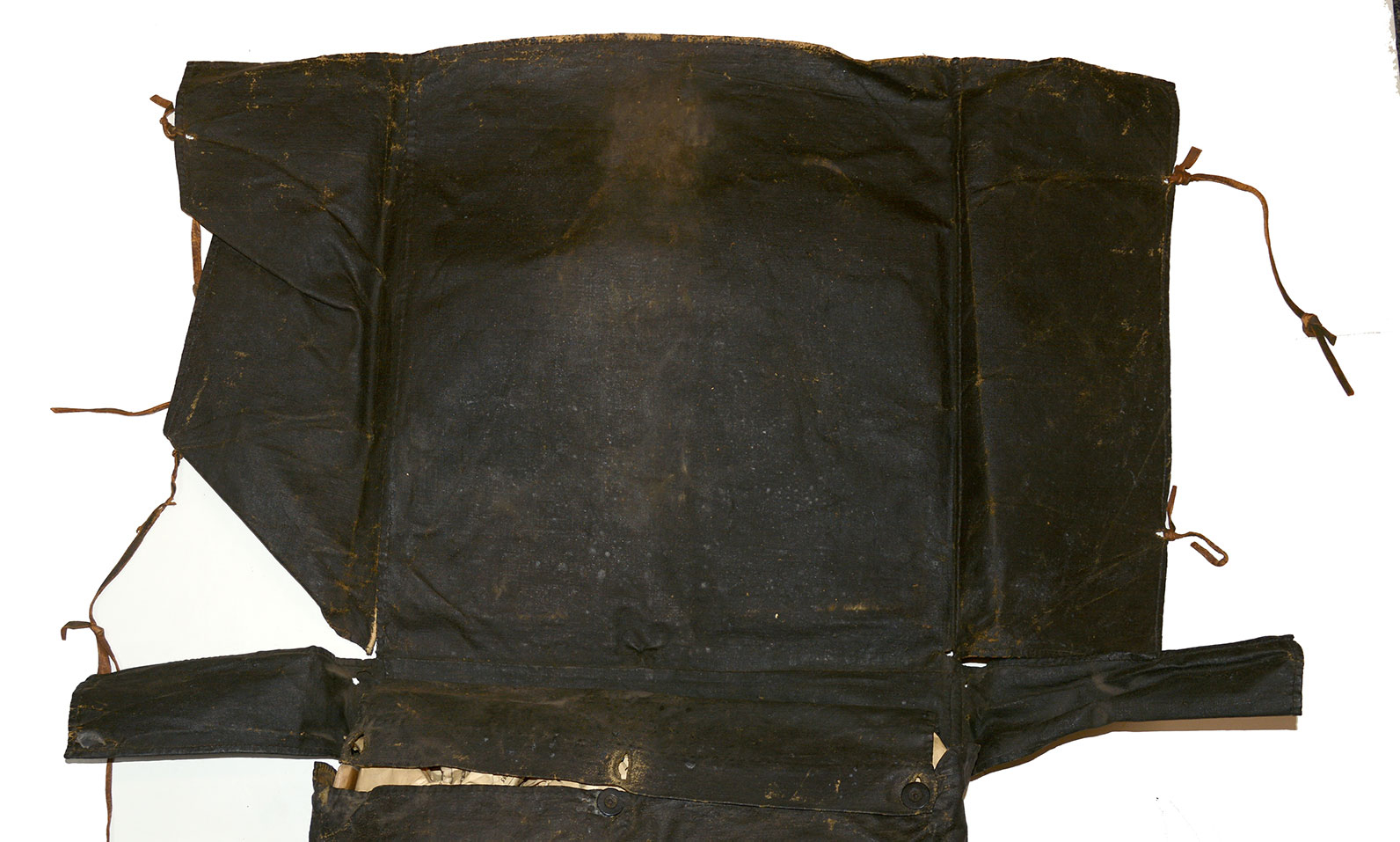
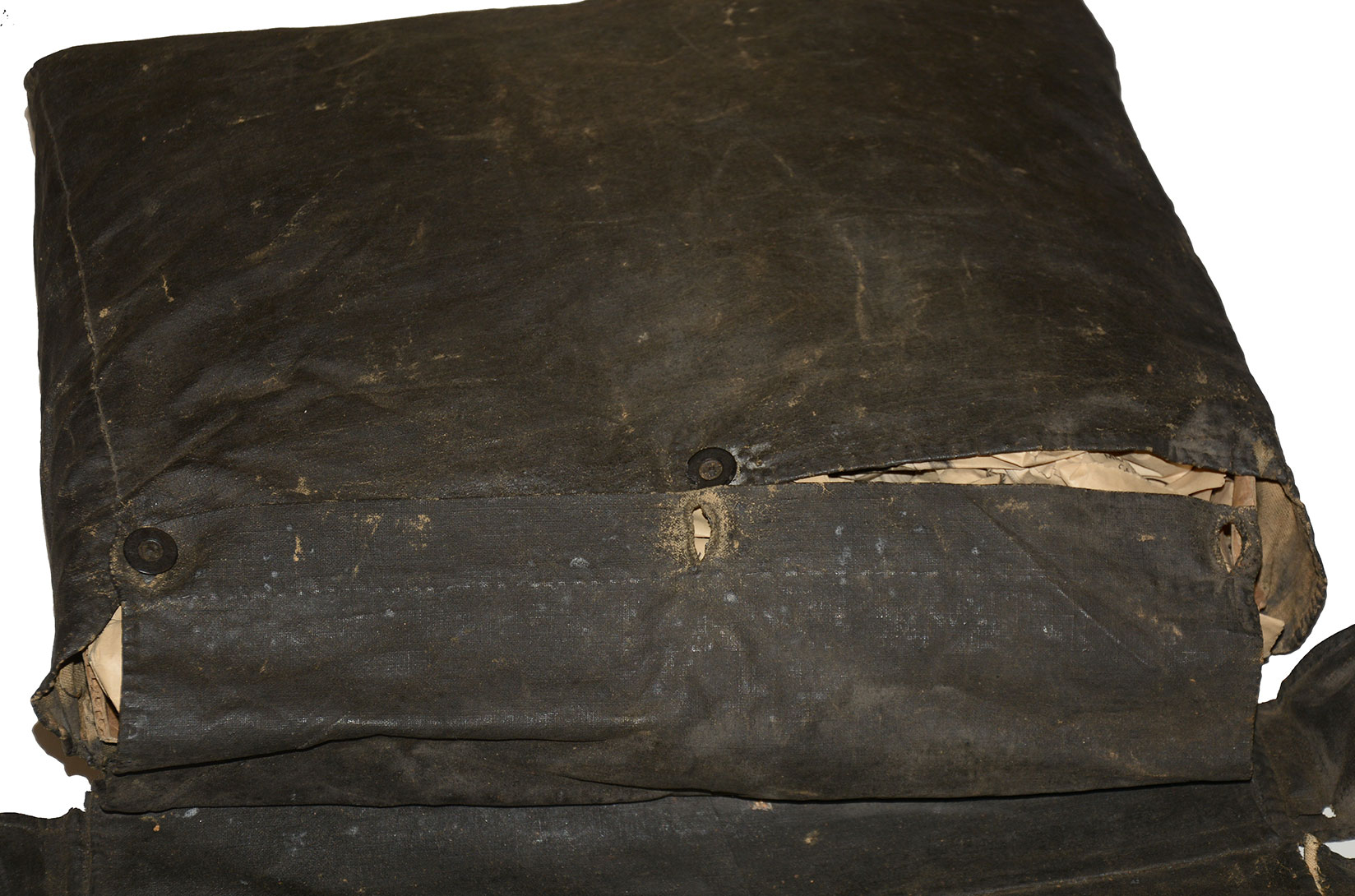
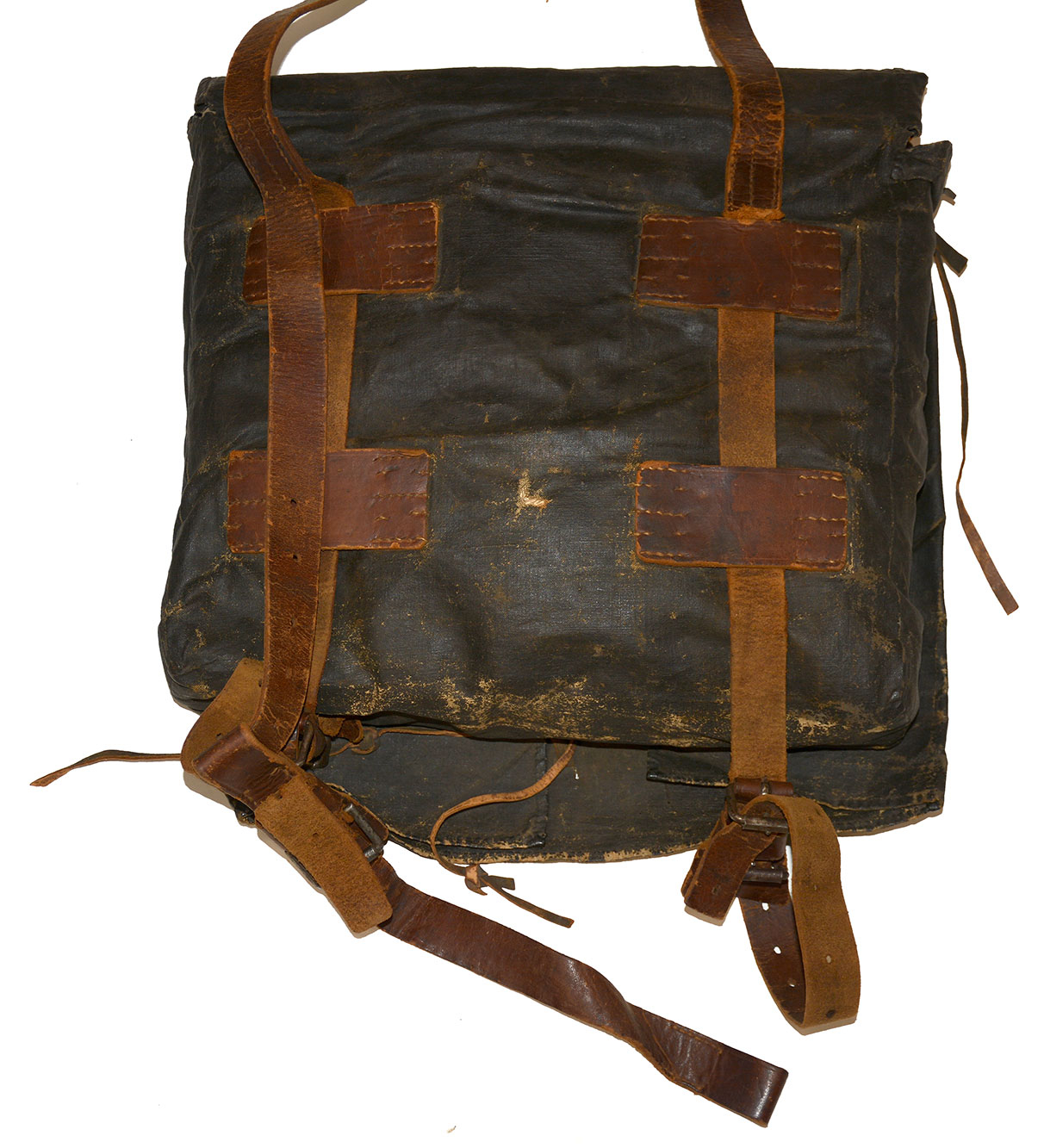
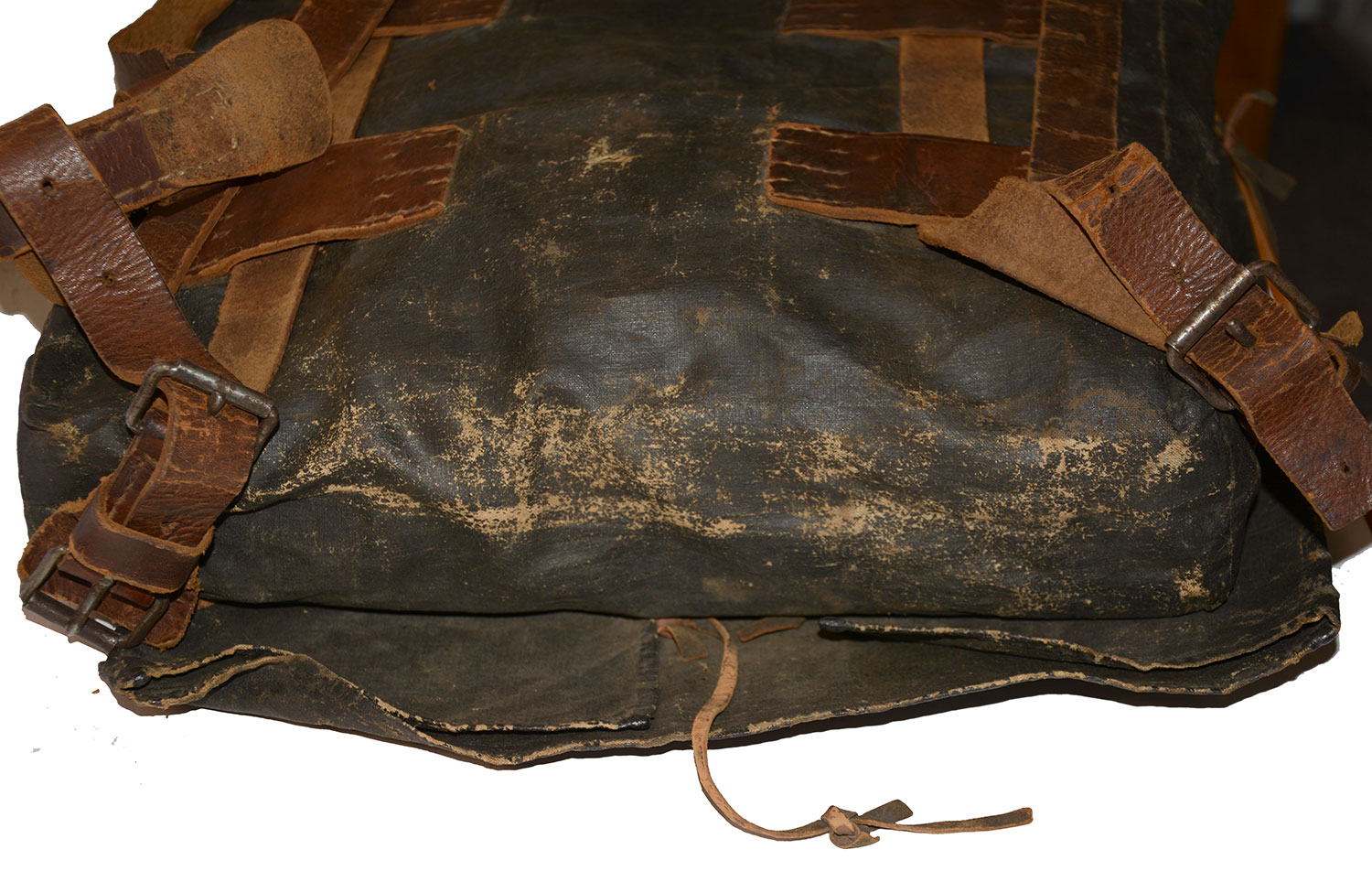
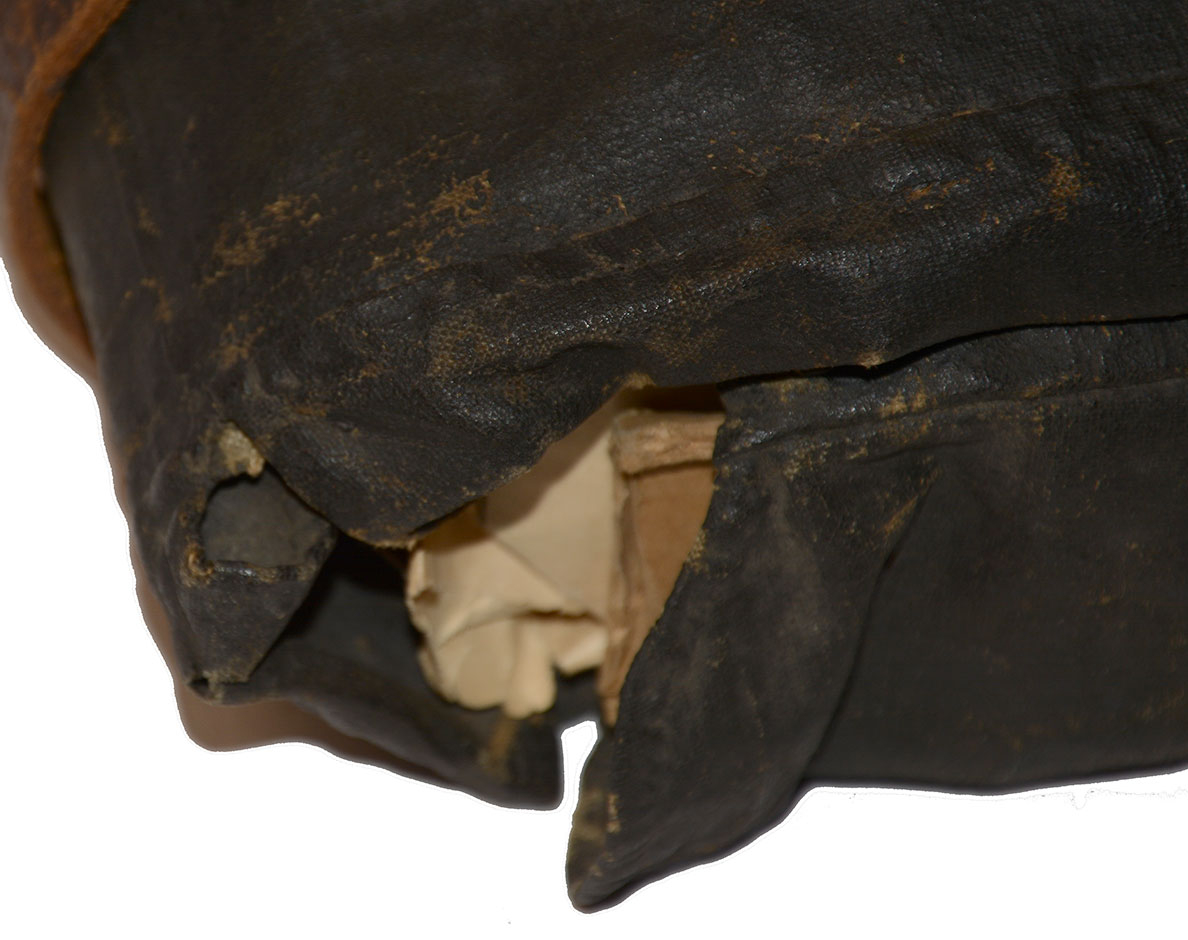
$35,000.00 SOLD
Quantity Available: None
Item Code: 1179-245
This very scarce Civil War US Marine uniform grouping comes from the Texas Civil War Museum, was once in the collection of Jim and Tony Stamatelos of Cambridge, Mass., and is illustrated on page 168 of Arms and Equipment of the Union, published by Time-Life, and also extensively shown in The Civil War Uniforms of the United States Marine Corps: The Regulations of 1859, by Cureton and Sullivan on pages 95-101 and page 148 which provides a detailed analysis of the coat and cap, making this group a textbook example.
This grouping belonged to John E. C. Hammond, and his name appears in the sweatband of the fatigue cap and the watch pocket in the trousers. Hammond was a shoemaker who enlisted in the Marine Corps at Boston to serve four years on May 15, 1861, and served until discharge on August 24, 1865, at the barracks in Boston. (Massachusetts Soldiers and Sailors transposes his middle initials and mistakenly lists him as John C.E. Hammond.) Hammond was born in Marblehead, Mass, in 1832, and married in December 1857. The 1860 census picks him up as living with his mother in Marblehead, but the 1870 census found him with his wife and three daughters and working in a shoe factory in Marblehead. By 1880 he was working as a shoe cutter in Philadelphia, where he was member of George W. Town Post No. 46 G.A.R. He died in Philadelphia Jan. 9, 1883, but was interred back in Marblehead. Massachusetts Soldiers and Sailors credits him with service on the U.S.S. Santee, though without specific dates. This ship name appears with his own in old brown ink on the watch pocket of his trousers. A biographical note by Cureton and Sullivan indicates he was promoted sergeant on Dec. 1, 1862, but reduced to private after deserting from Feb. 12 to May 20, 1863. His dress uniform coat shows no sign of chevrons, which Cureton and Sullivan think may indicate it was issued after his return to service in mid-1863. (His extra three months of service were likely tacked on to his four-year enlistment to make up for his absence.) It is equally possible, however, the coat survived from his first service as a private and was packed away upon his promotion to sergeant. In either case, it is the earlier pattern with taller collar. Similarly, Hammond’s trousers have his name and “U.S.S. Santee” in brown ink on the watch pocket, but we do not know the exact time of his service on that ship, so they could have been issued earlier or later.
Hammond’s desertion occurred after the Santee had returned to Boston from blockade duty in the Gulf of Mexico and we would expect he had served on it during that duty rather than on its later service as a training vessel. If so, he saw some action. The ship, an older style 44-gun frigate, sailed from Portsmouth, NH, in June 1861, and by the end of the year had taken three prizes and destroyed one Confederate armed schooner in a boarding action. Her first two prizes were blockade runners: on August 8, she seized C.P. Knapp, a schooner, 350 miles south of Pensacola; and on October 27 took the Delta off Galveston. In November the Santee sent boat crews into Galveston Harbor to attack the Confederate steamer General Rusk. They lost the element of surprise against their target and diverted to attack the Royal Yacht, a chartered armed schooner acting as a lookout. At the cost of two officers and six men wounded, one man mortally wounded, and one killed in the close fighting as they boarded the vessel, they took about a dozen prisoners and set the enemy ship on fire. Their final capture for the year was the Confederate schooner Garonne, taken on December 30 and later used as a lighter for the Santee. In 1862 the Santee served as part of Farragut’s West Gulf Blockading Squadron, stationed primarily off Galveston, until returning to Boston in August 1862 and was in decommissioned in September, but was refitted, commissioned once again a month later and sent to Newport, RI, the wartime home of the US Naval Academy, where it served as a school ship, a function it continued after sailing to Annapolis in August 1865.
The group consists of the following items:
1859 ENLISTED FULL DRESS COAT AND SHOULDER SCALES: This is fully regulation and is distinct from the USMC enlisted undress 7-button coat, pretty much a tunic, and the fatigue sack coat, more of a blouse. This has the double-breasted front, having 7 large USMC buttons in each row, red piping on collar, cuffs, and tails, and yellow false button holes, or loops, on the collar and cuffs. The collar is the early form used on the pattern- taller, and including two buttons on each side each with a false button hole of two rows of yellow lace, rather than the later single row for each button and commensurately lower collar. The two loops on the cuff, each with a button, indicate a private, corporal, or sergeant (with three indicating the NCO staff.) The tails have the correct six buttons with red piping. The interior is left unlined down the very center of the back in both body and skirts, but lined in brown in the side panels of the body and both the sides and fronts of the skirts. In the body the front panels are lined with the same dark blue cloth as the exterior, with a stiffener between. The sleeves are lined in white. There is a single interior pocket in the left breast and functional tail pocket accessible from the outside. The shoulder scales are fully regulation as well: similar to the army version, but with a yellow fringe, now a cream color, suspended from a short brass plate held in the crescent at the shoulder. The condition is excellent, the fabric is strong, with strong colors and little moth damage. We see four small holes and some tracking just above the fourth buttonhole on the wearer’s left lapel, four small nips on the skirts on the lower left front of the skirts and one on the right, about 4 inches down from the waist. The upper back shows a six or so, all small, along the left shoulder, and two or three about three inches in from the shoulder sleeve at armpit. The tails show two on the left of the slit, and about two-dozen small nips on the edge of the right flap that are concealed by the overlap of the left flap. The inside of the collar shows a dozen or so nips that show because they expose the light stiffener inside, but there is only one such on the exterior back of the neck. All of these could be backed, but they are not noticeable in displaying the coat and do not affect the structural integrity of the garment either.
TROUSERS: Regulation sky blue with French pockets closed at the side seam by a button at top. Two of four fly buttons are there, as well as two at the waistband and one for an interior strap. Five of six suspender buttons are there. The rear waist is cut in a short V and closed by an exterior sky blue adjusting strap with buckle. The waist, crotch, and fly have white linings. In addition to the side pockets there is a watch pocket on which “J. Hammond / U.S.S. Santee” is written in brown ink. The cuffs are lined for 3 ½ inches and provided with two buttons on each side for an instep strap. One button is missing. The right cuff lining is torn but all there. The fabric is solid and there is scattered light tracking to the nap that is not readily apparent because the color matches. There is some pinprick mothing on the front of the wearer’s right thigh, and some lighter scattered nips on the lower legs. These are all very small and not readily apparent. On the rear, there are some moth holes on the left leg, a couple of holes in the seat and a couple more behind the knee. These are 1/8 inch at most and have been backed with matching material. The trousers look great, are structurally fine, and very displayable.
SHAKO: This is the second pattern of the USMC regulation 1859 dress cap using a red worsted wool pompom in place of a brass ball and the slightly smaller front plate and wreath. This shako is illustrated not only in the Time-Life volume, with the coat and trousers, but also on page 148 of Cureton and Sullivan, where it is shown from front, back and side, and discussed in the caption. The cap is fully regulation and is in excellent condition, with some very minor wear along the lower edge of the body and edges of one chinstrap loop, and a couple of scratches on the inner edge of the inset leather top. The red pompom, rosette, and backing to the silver “M” in the hunting horn on front plate are all good. The pompom is deep crimson red. The rosetted and background of the “M” are more muted. (The photography in Cureton and Sullivan brightens them somewhat.) There are no creases or indentations to the black body. The plates are secure. The chinstrap and USMC side buttons are firmly in place and fully intact. Visor is firmly attached. The tall, 3-inch sweatband with scalloped upper edge and drawstring is in place on the interior. There is short 1-inch tear to the lower edge of the sweatband at rear, with some loosed stitches at the overlap, but the sweat band is sweatband is securely in place. The underside of the crown shows some glue stains indicating there was likely a contract label when first issued.
1859 ENLISTED MARINE FATIGUE CAP: This is the regulation low-crown kepi style cap with inset top that looks far more dashing than its army equivalent. These were to be identical to the officer’s version, but without the officer’s black silk band around the base or black braid on the sides and top. The bound visor is flat and securely attached. The narrow, 3/8-inch wide chinstrap is in place, made of glazed leather and secured by two small USMC buttons. It has a small fixed buckle one half and a standing loop on the other. The reddish sweatband is in place, shows just a few loose stitches along the lower edge and has “J. Hammond” in brown ink inside it, over the wearer’s left ear. The black cloth lining is in place on the sides and the underside of the top, which is quilted with a broad spiral stitch. The lining is very good, but does show some slight wear from rubbing the top of the head. The fabric is excellent, with just a couple of pencil point moth nips and strong blue color. The cap still retains its original insignia on the front, consisting of the regulation gilt brass hunting horn with a silvered “M” in the middle. This is secured on the inside by a narrow leather thong. The only element missing is the small piece of red material that would have been behind the “M” in the loop. The cap is fully regulation, but may have been a private purchase by Hammond: the 1859 regulations specify a “prepared leather” lining for the crown and quilted linings are usually an indicator of higher quality and private purchase in Civil War headgear.
US MARINE CORPS KNAPSACK: About the only step up from “rare” is “one of a kind” and this is it. This knapsack is pictured on page 216 of Arms and Equipment of the Union (Time-Life,) and on pages 285-286 of Cureton and Sullivan, The Civil War Uniforms of the United States Marine Corps: The Regulations of 1859, where it is discussed stated to be “the only known example.” They feel it is likely the pre-1859 pattern, since the 1859 regulations specify the knapsack would be made of black “cow-skin,” though whether there were necessary compromises after the war broke out is unclear. Marines were not expected to do extensive campaigning on land and until 1859 were not even specified a canteen or haversack, being expected to operate from barracks or aboard ship, and when called upon for land service in the Seminole and Mexican Wars had drawn those items from army stores.
The knapsack is made of Russia sheeting painted black and bears a block letter “USM” inside an oval on the flap along with the number “20,” likely the marine’s rack number, at top. Both designations show fading, but are legible. (The Time-Life photos make the number brighter and Cureton and Sullivan photos make the lettering more prominent.) The number was done in red. C&S describe the oval and letters as white, but they certainly look yellow to us and the combination of red and yellow would be appropriate for the Civil War USMC. The main pocket inside the knapsack is closed by a flap and three buttons, two of which remain. The outer flap has wide edges that are folded over to the inside and provided with leather thongs enabling them to be tied closed and secure a folded blanket or other items. The shoulder and chest straps are harness leather, now brown in color, likely oxidized from black, and are independent from the pack, running through four flat leather loops sewn to side of the pack resting against the Marine’s back, one at top and one at bottom on either side. A long strap runs through these loops and around the pack from top to bottom to keep it closed. A shoulder sling is formed on either side by a secondary strap sewn just above where the main strap enters the upper pack loop. This passes over the Marine’s shoulder and is secured at bottom by a second buckle on main strap. The two shoulder slings thus formed are joined over the chest by another buckled strap running along each shoulder sling by a loop.
The condition of the knapsack is excellent. One of the shoulder straps has broken from careless handling, but there is no missing piece and it could easily and invisibly be repaired. Otherwise the leather shows just some scattered wear and craquelure to the finish and we see just one or a couple of pencil-point size holes to the fabric of the pack at folds or short tears on edges that are tough to spot.
This is an extremely scarce, identified Civil War U.S. Marine Corps group with an impeccable provenance, in great condition, and not just “like the one in the book,” but actually the one in the book(s.) [sr][ph:L]
Will require additional shipping charge.
~~~~~~~~~~~~~~~~~~~~~~~~~~~~~~~~~~~
THIS ITEM, AS WITH ALL OTHER ITEMS AVAILABLE ON OUR WEB SITE,
MAY BE PURCHASED THROUGH OUR LAYAWAY PROGRAM.
CLICK HERE FOR OUR POLICIES AND TERMS.
THANK YOU!
Inquire About CIVIL WAR US MARINE CORPS GROUPING OF PRIVATE JOHN HAMMOND: REGULATION SHAKO, DRESS COAT, TROUSERS, FATIGUE CAP, AND KNAPSACK: THE SET IN THE BOOKS!
Most Popular
Historical Firearms Stolen From The National Civil War Museum In Harrisburg, Pa »
Theft From Gravesite Of Gen. John Reynolds »
Selection Of Unframed Prints By Don Troiani »
Fine Condition Brass Infantry Bugle Insignia »
Large English Bowie Knife With Sheath 1870’S – 1880’S »
Imported (Clauberg) Us Model 1860 Light Cavalry Officer's Saber »
featured item
AMBROTYPE OF IDENTIFIED MUSICIAN OF THE PETERSBURG MILITIA
Formerly in the collection of Bill Turner, this sixth plate ambrotype has a great pedigree, having been published as Figure 2 in Albaugh’s landmark “Confederate Faces.” Identified there as a, “Musician named Crowder, of Petersburg, Va., in… (1138-1866). Learn More »


